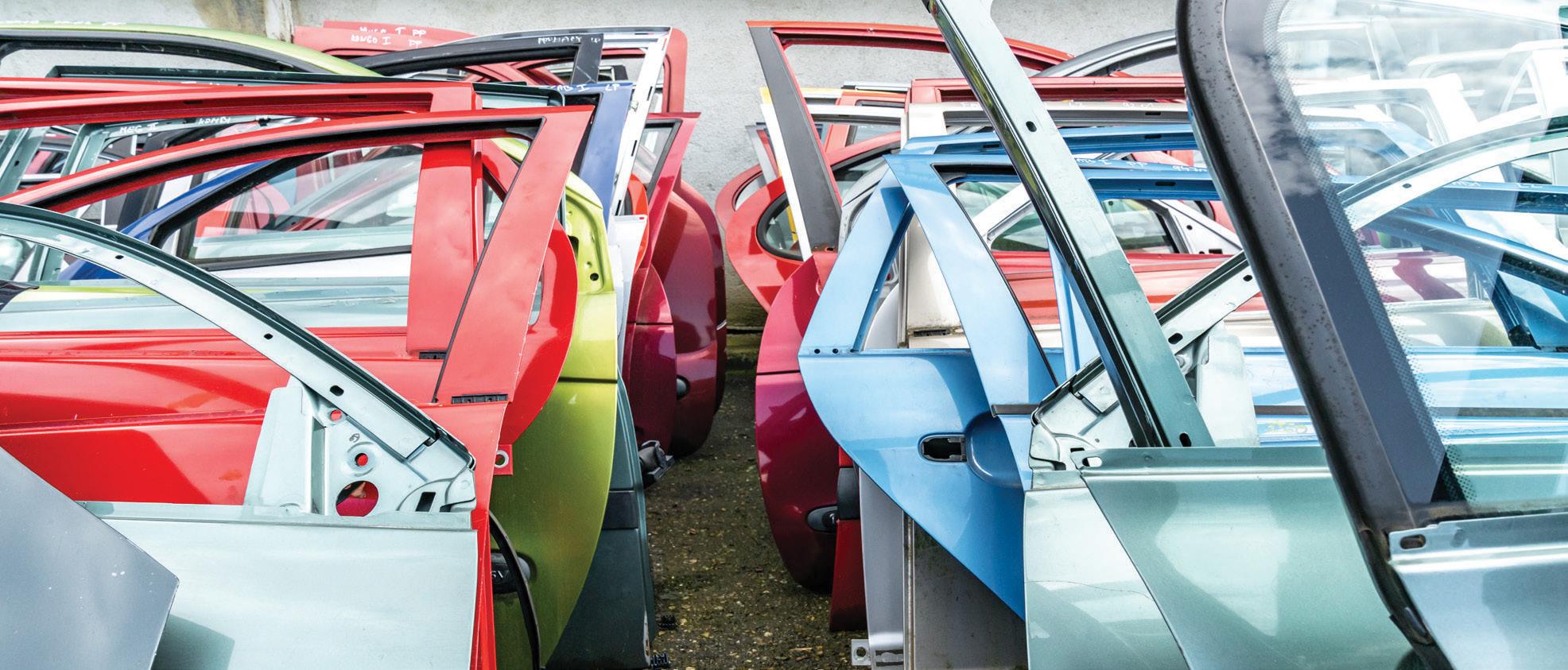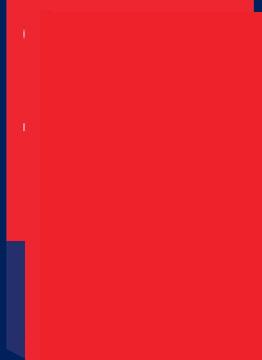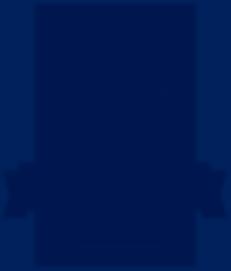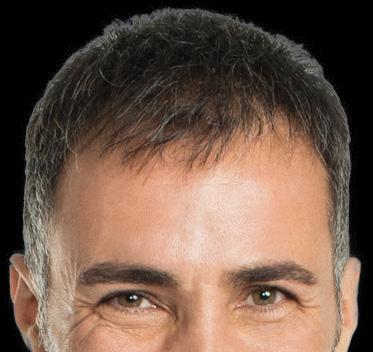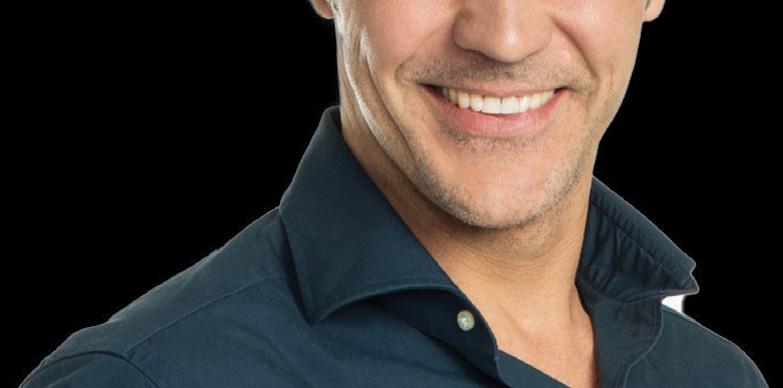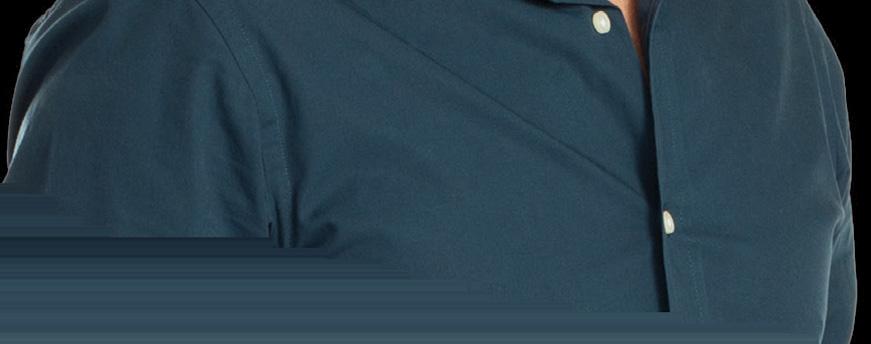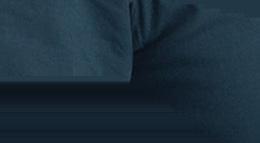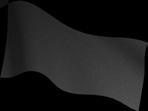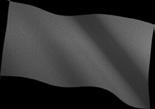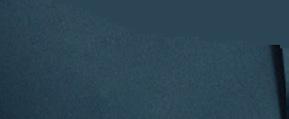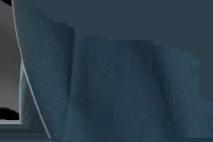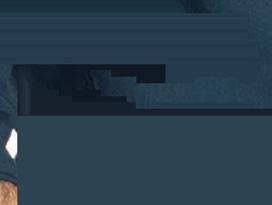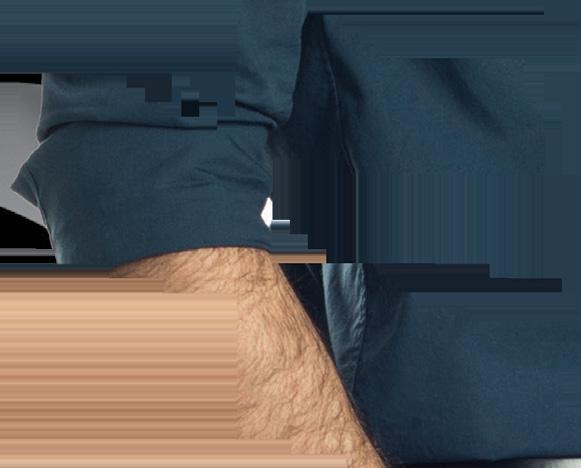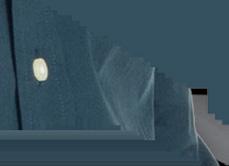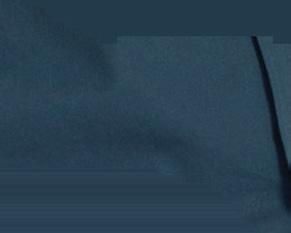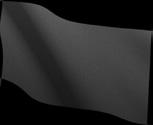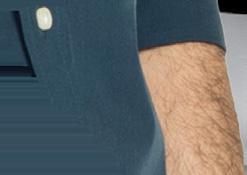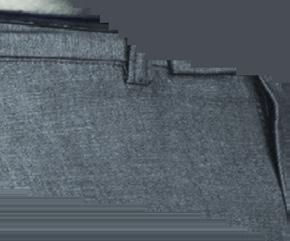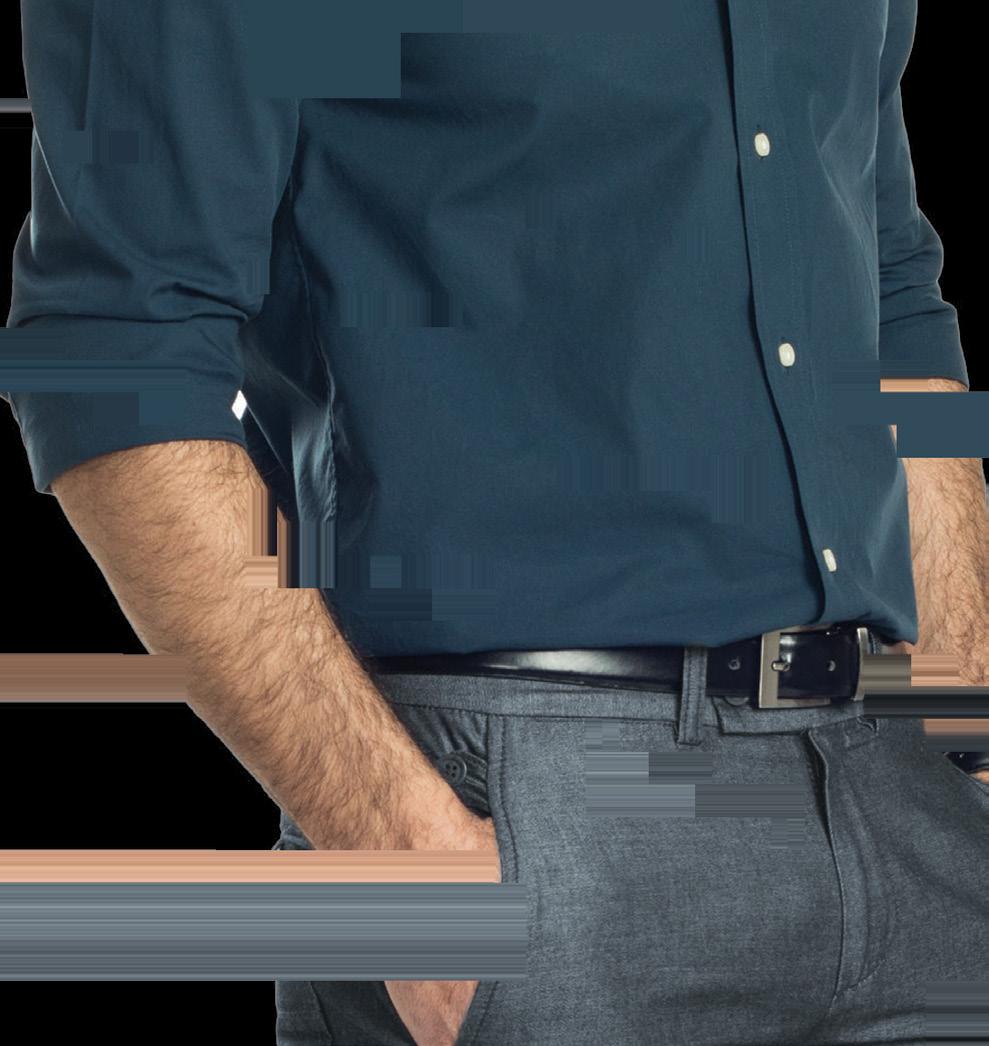
















































Our state-of-the-art 3M™ Skills Development Center will allow our industry experts to provide more hands-on training. We are dedicated to teaching body shop staff the most updated processes from real-world experts, OEMs, and accredited partners. We provide training that helps shops, managers, and technicians deliver quality repairs while maximizing efficiency, productivity, and the bottom line.
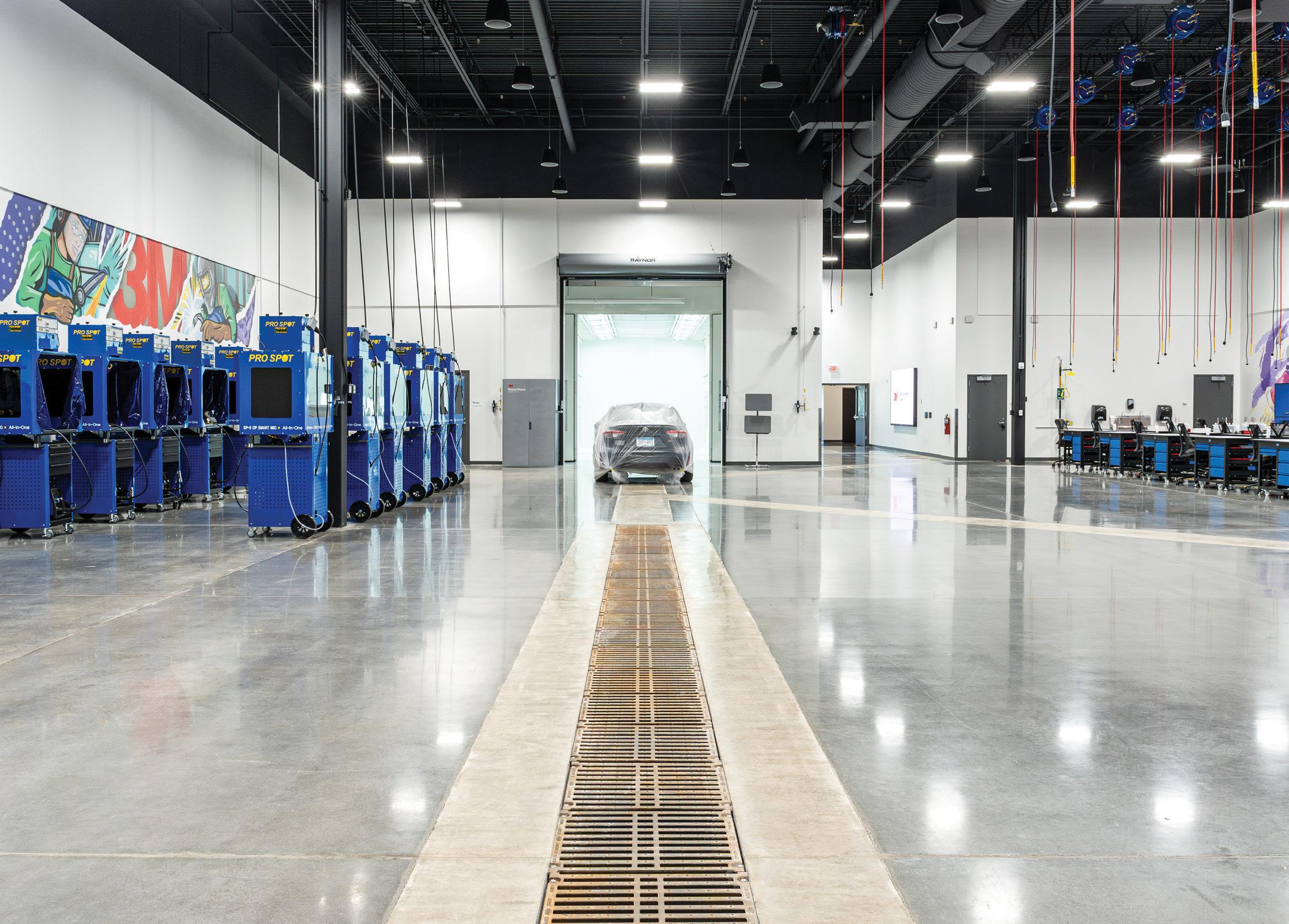

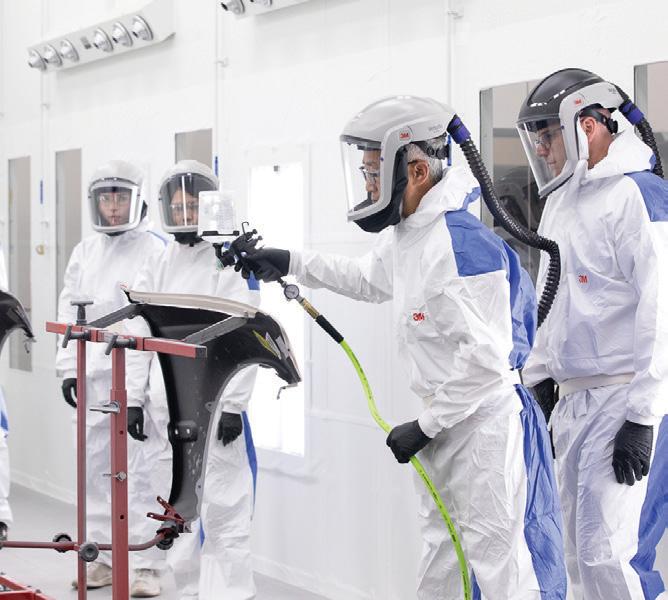
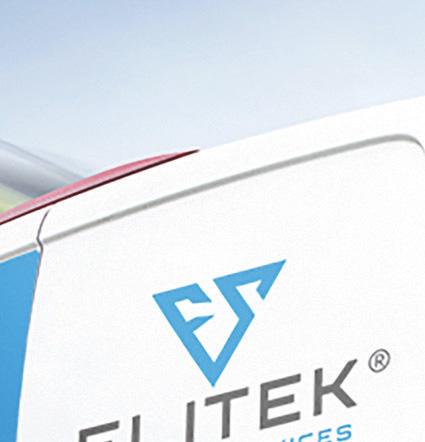
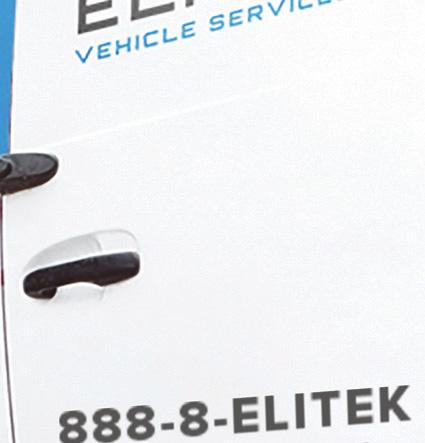
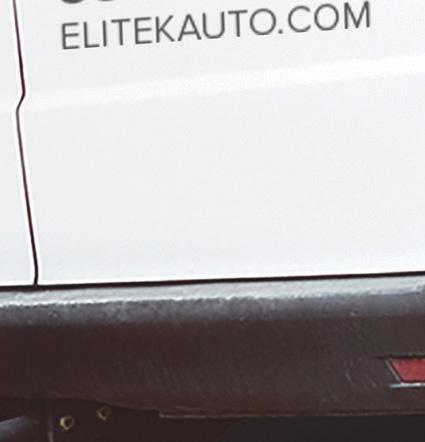
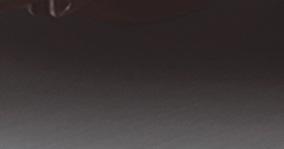
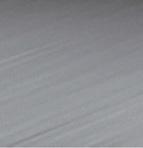

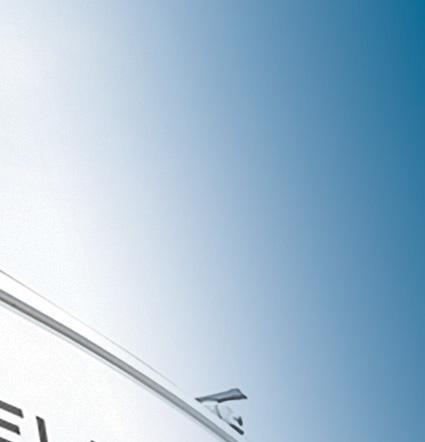
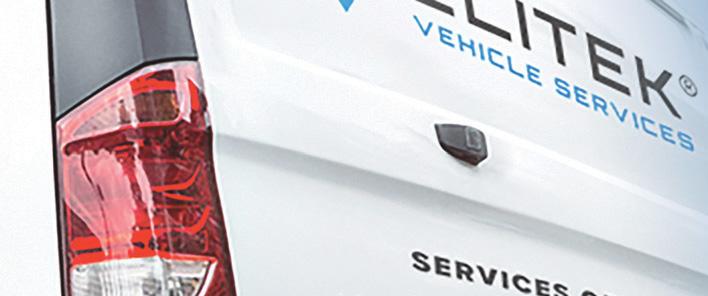
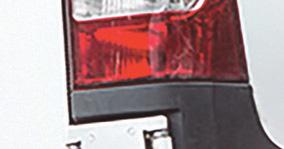
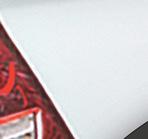
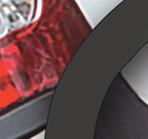
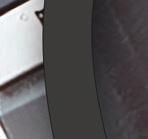
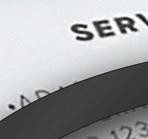
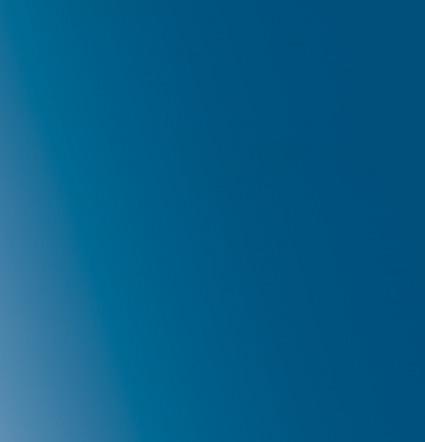
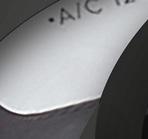
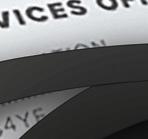
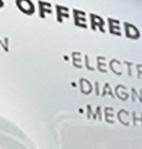
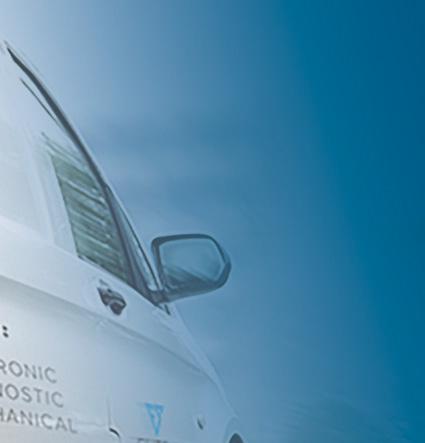
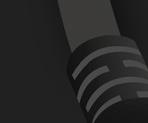
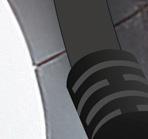
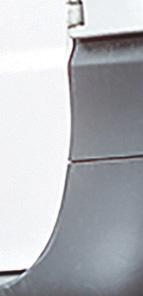

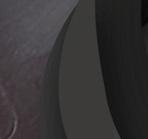

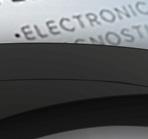
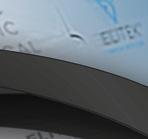
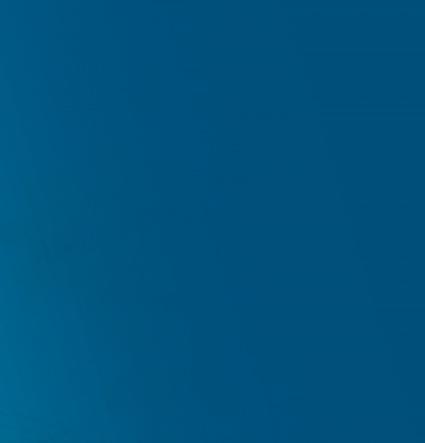
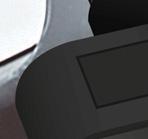

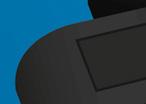
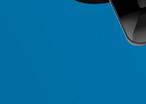


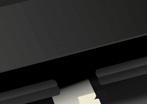
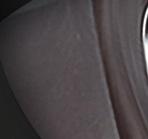
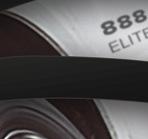

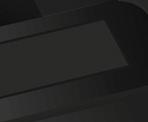

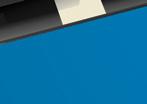
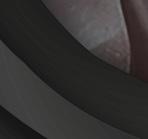
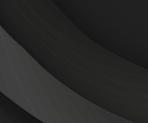
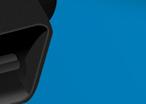
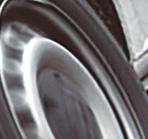
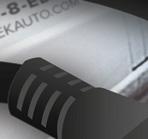



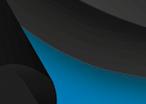
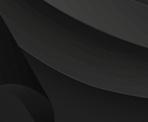


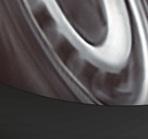
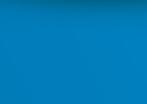
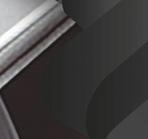
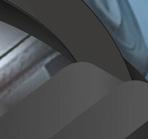

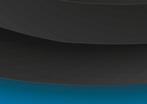
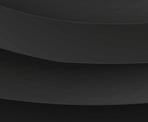





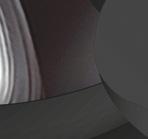
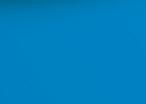
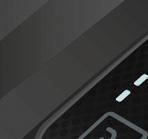


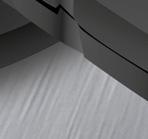
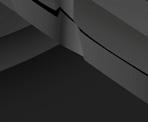
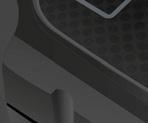
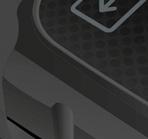
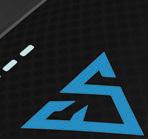
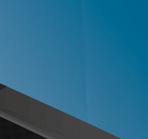
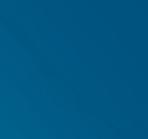
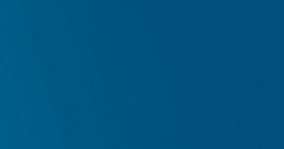
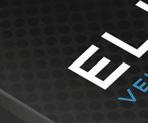
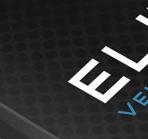
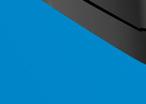
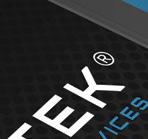



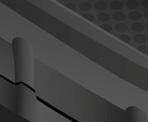
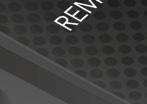
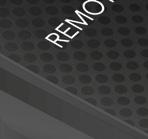
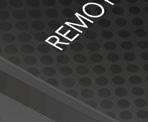
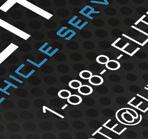
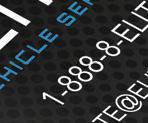

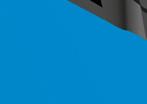
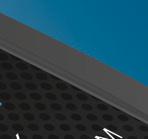



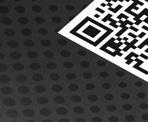
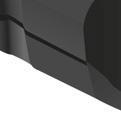
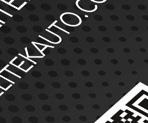
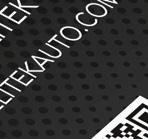
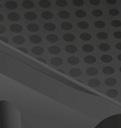

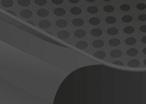
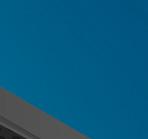
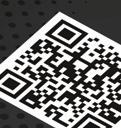

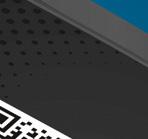
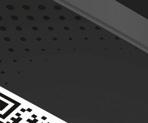
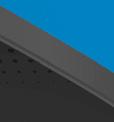
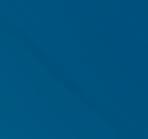

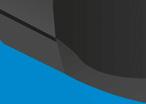
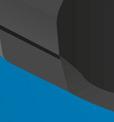

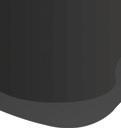

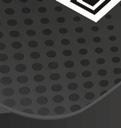
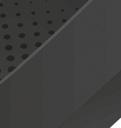
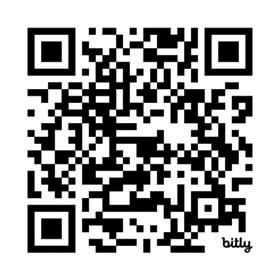
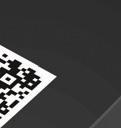
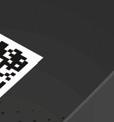
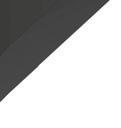
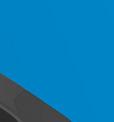
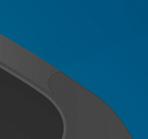

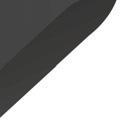
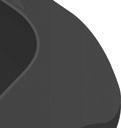
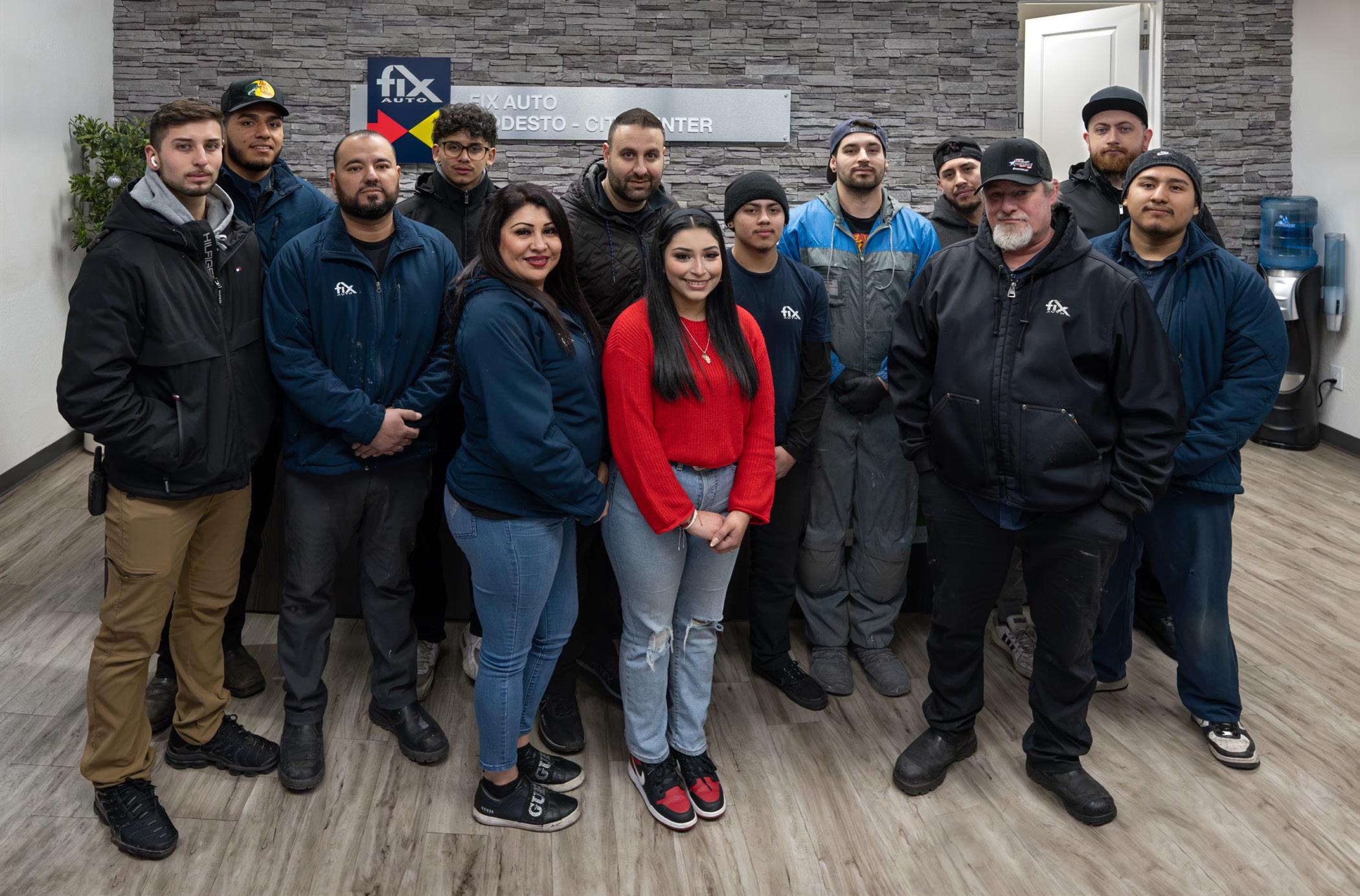
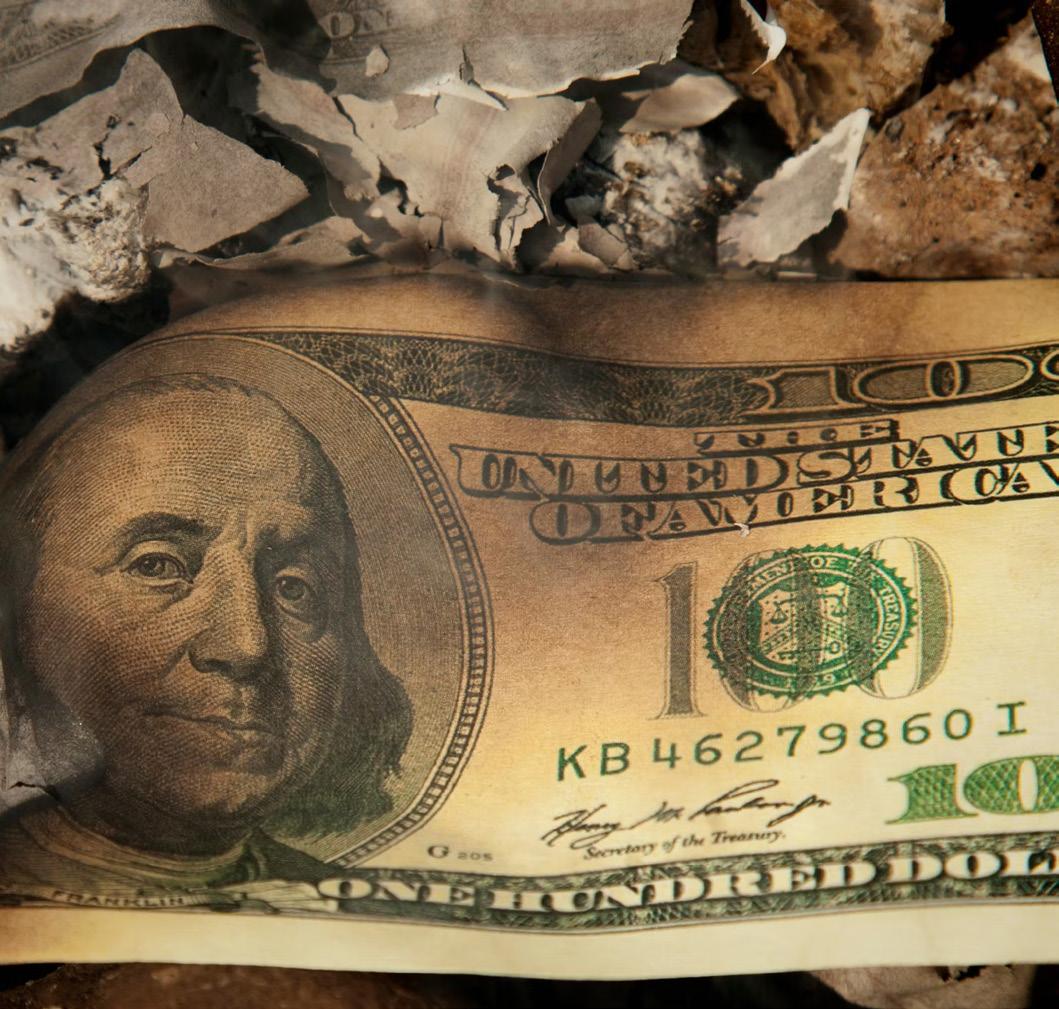
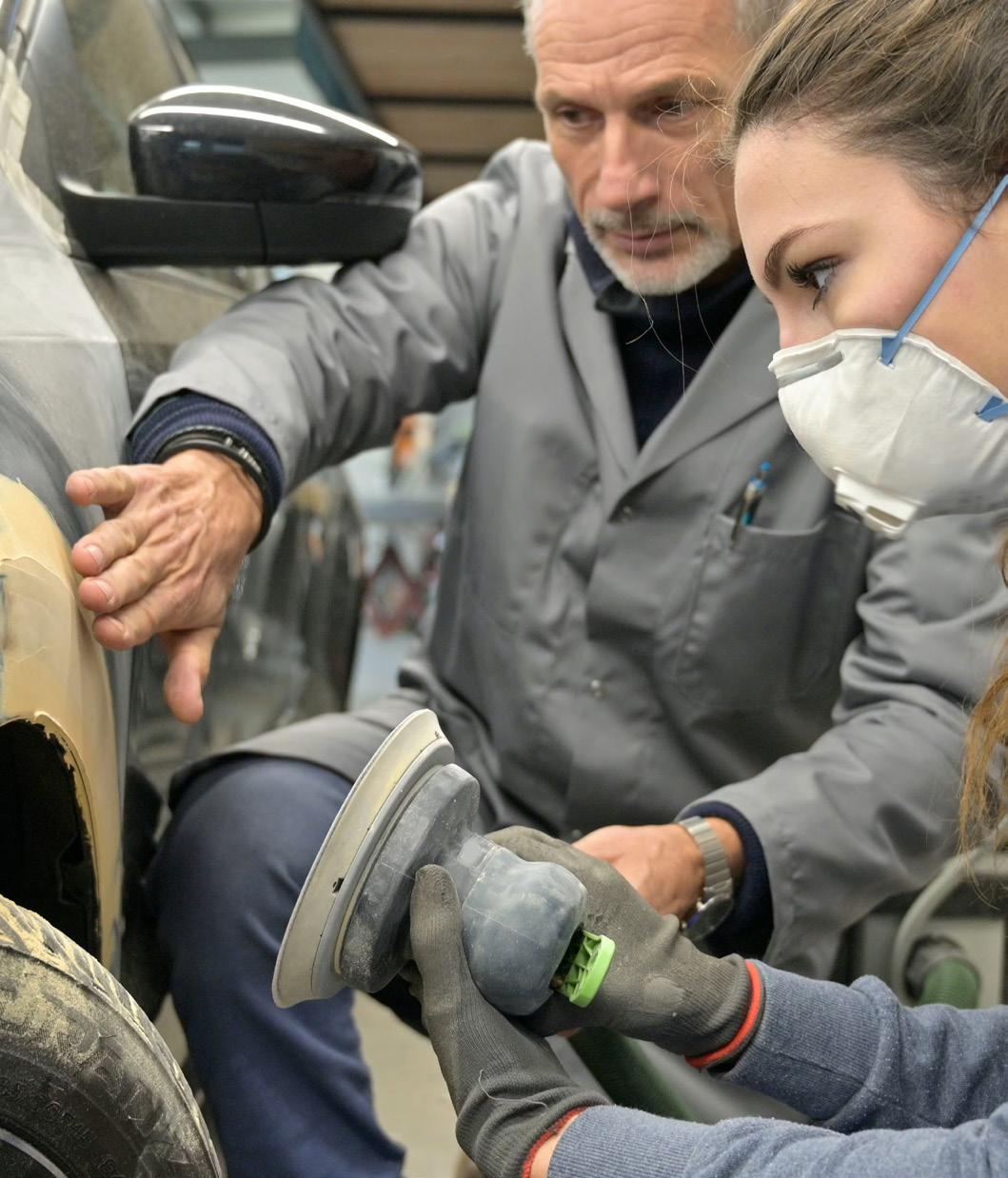


HOW ATI SHOPS PERFORM*

4 % GROSS PROFIT MARGIN
5 % LABOR MARGIN


3 % PARTS MARGIN
LEVEL UP WITH THE EXPERTS.
→ The trusted leader in coaching and consulting for independent collision shop owners.
→ Over 25-year track record elevating hundreds of members across the United States.
→ The most comprehensive program and support network, backed by ROI results guarantee.

visit www.autotraining.net/level-up
Matt Hudson Content Director
Jay Sicht Editor-in-Chief
Abdulla Gaafarelkhalifa Associate Editor
Kacey Frederick Assistant Editor
Emily Kline Special Projects Editor
Leah Marxhausen Special Projects Editor




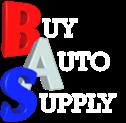
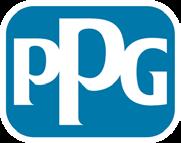

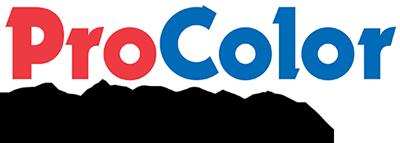
Inc.
Drew Bryant Contributing Writer
Tiffany Menefee Contributing Writer
Greg Lobsiger Contributing Writer
Noah Brown Contributing Writer
Lindsey Gainer Contributing Writer
Todd Kortemeier Contributing Writer
Steve Trapp Contributing Writer
Jordan Beshears Steve’s Auto Body
Sheryl Driggers Collision Advice
Frank Rinaudo Industry Consultant
Jason Mundy Mundy’s Collision Center
Stan Medina Certified Collision Works
Andrew Johnson Associate Publisher ajohnson@endeavorb2b.com
Mattie Gorman-Greuel Associate Sales Director
Cortni Jones Director of Business Development
Diane Braden Account Executive (National Accounts) dbraden@endeavorb2b.com
Marianne Dyal Account Executive (National Accounts) mdyal@endeavorb2b.com
Chad Hjellming Account Executive (National Accounts) chjellming@endeavorb2b.com
Lisa Mend Account Executive (National Accounts) lmend@endeavorb2b.com
Martha Severson Account Executive (National Accounts) mseverson@endeavorb2b.com
Kyle Shaw Account Executive (National Accounts) kshaw@endeavorb2b.com
Sean Thornton Account Executive (National Accounts) sthornton@endeavorb2b.com
Ryan McCanna Administrative Assistant
ART AND PRODUCTION
Mariah Straub Production Manager
Jen George Ad Services Manager
Mitch Bradford Art Director
CEO Chris Ferrell
President June Griffin
COO Patrick Rains
CRO Reggie Lawrence
Chief Digital Officer Jacquie Niemiec
Chief Administrative and Legal Officer Tracy Kane
EVP Endeavor Business Intelligence Paul Mattioli
EVP Transportation Kylie Hirko
VP and Group Publisher Chris Messer
HOW TO REACH US
Endeavor Business Media, LLC
571 Snelling Ave N Saint Paul, MN 55104 tel 651.224.6207 fax 651.224.6212
The annual subscription rate is $90 (U.S.A. only) for companies not qualified to receive complimentary copies of FenderBender.
LETTERS TO THE EDITOR editor@fenderbender.com
Opinions expressed in FenderBender are not necessarily those of Endeavor Business Media, and Endeavor Business Media does not accept responsibility for advertising content.

AT THE Collision Industry Conference (CIC) in January, Industry Relations committee members reported the findings of their survey on post-repair inspections. As I detailed in an article in this issue, a post-repair inspection was typically triggered by a vehicle owner concerned with cosmetic issues such as fit and finish. But beneath the surface often revealed much more severe issues, including unrepaired structural damage (on half of those examined) and nonexistent calibrations. The problems were severe enough, in fact, that of the 26 post-repair inspections examined by the committee, 90% had been deemed total losses by the insurer.
The committee reminded CIC attendees that repairers who follow a blueprint, OEM repair procedures, and a defined process throughout the damage analysis can help provide accountability and a predictably favorable outcome.
At FenderBender and ABRN, we wanted to recognize the staff who are conscientious about making sure vehicles are repaired with safety and quality in mind.
We were inspired by the success of the Best Young Technician Award, presented by another publication in the Endeavor Business Media Group, Motor Age, since 2021. For 2024, we’re proud to announce that FenderBender and ABRN are introducing the Best Repair Planner/Estimator Award .
A panel of judges from the industry selecting finalists using criteria such as an emphasis on safety and quality, career development, innovation, technical or education achievement, and personal attributes.
Finalists will then be scored on a mocked-up repair plan by Mike Anderson’s team at Collision Advice. One winner will be selected and earn a trip to the 2024 SEMA Show in Las Vegas and an award plaque, to be presented at the show. Further details are in an ad in both magazines, and nominations open March 15. We've received much enthusiasm for the announcement of this inaugural award, and I'd like to thank this year's sponsors: AkzoNobel, asTech, Collision Careers, Elitek Vehicle Services, Final QC, Goliath Carts, and PPG, who help us recognize a deserving individual.

 JAY SICHT EDITOR-IN-CHIEF jsicht@endeavorb2b.com
JAY SICHT EDITOR-IN-CHIEF jsicht@endeavorb2b.com

WITH MORE PARTS needed to repair the average vehicle due to vehicle complexity, additional ways to order them, and pressure on shop owners and operators – especially those graded on a direct repair program’s “scorecard,” there is often a gap in how they and their suppliers communicate what is important to them.
To bring them together, Subaru of America Fixed Operations and Mike Anderson of Collision Advice joined to offer workshops around the country. Participants include Subaru dealership parts managers and other fixed operations personnel and shop owners and operators, where each gains perspective on their business challenges.
FenderBender was invited to attend the daylong Feb. 6 meeting at Collision Advice Headquarters, in La Plata, Maryland, with attendees from both the Washington, D.C., metro and surrounding areas.
Shops are replacing more parts and doing fewer repairs, Anderson said, largely due to ADAS and advanced substrates. Those have gone from an average number of parts per claim, he said, of 8.4 in 2011 to 12.7 in 2022, which is now up to 42% of the total repair cost, according to CCC Intelligent Solutions research. That means lower gross profit, and more sublet operations are also now needed – as much as 10% more.
That can result in shops “squeezing vendors for more margin” to help make up the losses, he said. But overall, “the availability of parts is much more important than the price. Time is the most important thing to the shop.”
Shop operators at the meeting noted that parts departments (of all vehicle makes) often are too optimistic with the ETA of a part, causing missed delivery dates. If it’s too late to get a critical part on today’s shipment, the shop may be OK with picking it up at the dealership. Similarly, Anderson noted, it may be desirable to get expedite shipping to receive a part faster. Insurers, facing longer cycle times and the need to hold back more money in escrow, usually pay the extra cost without issue.
Some highlights from previous meetings of what shops want from their parts supplier, Anderson said, include the ability accept electronic parts ordering, the ability to scrub a parts order by VIN, good inventory, great communication, willing to search inventory of other dealers, a fair discount (not necessarily the lowest cost), knowledgeable staff, billing parts in sequential order to match the shop PO from the management system, and timely credit-processing.
What dealers want from their customers are loyalty to the supplier and in using OEM parts, avoiding last-minute orders, sending only one parts order per vehicle, electronic ordering, minimal returns, and paying their bill on time.

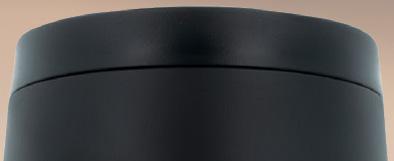
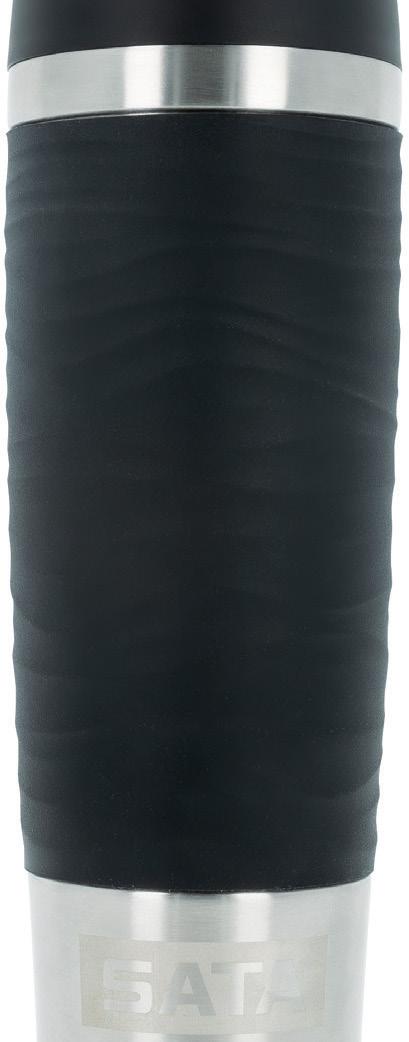



OEM repair procedures not being followed, missing ADAS calibrations, and lack of quality control were common.
By JAY SICHTIF YOU SPEND ANY TIME ON social media in collision repair discussions, you’ve probably seen the results of postrepair inspections uncovering sins by unscrupulous repairers: panel gaps one can see daylight through. Unaddressed weld burns or missing corrosion protection. Buckles remaining in frame rails. Some of the flaws are visible with the naked eye; some require some sleuthing with a borescope. But how serious are some of the flaws in these vehicles that prompted those inspections?
With much talk in the industry about substandard repairs and the post-repair inspections that uncover them, the Collision Industry Conference’s Industry Relations: OEM-Repairer Committee
conducted a survey on them to gain some insight on the topic. Committee members revealed the results of that study at the Collision Industry Conference Jan. 17 in Palm Springs, California. What it found in an examination of 26 post-repair inspections was that 90% of those vehicles were deemed a total loss, and half of them had structural damage that had not been addressed.
“Anyone can have a bad day,” said Liz Stein, OEC national account manager. “But that poor repair experience can have multiple negative consequences, not only for the consumer, but for every other stakeholders in the business. So, we wanted to look at some case studies to be able to be able to quantify how prevalent this is.”
Daniel Rosenberg, BASF OEM strategic account manager and who helped compile the study, said the vehicles are “classic examples of what’s going on in the industry when these examples come up.”
What the committee found was the post-repair inspections were typically prompted by the vehicle owner noticing fit and finish problems, said Ron Reichen, president of Precision Body & Paint, Beaverton, Oregon, who noted the data came from collision repair shops or companies that specialize in post-repair inspections.
“What is the first thing they see? Obviously, it’s going to be inclusions in the paint, paint color match, and things of that nature, because that’s, that’s what they’re, that’s what they see, you know, they don’t see underneath the onion, so to speak. And then that’s what starts the process.”
Repairers following a blueprint, OEM repair procedures, and a defined process throughout the damage analysis can help provide accountability and a predictably favorable outcome, he advised.
“Once the consumer sees the paint flaws, that raises red flags. Maybe it’s a panel adjustment: they opened the door and there’s a creak because there’s a panel misalignment between where the fender intersect. But there’s something that prompted that client to say, ‘I have concerns about this, I don’t have confidence with the repair facility, so I’m taking it to another facility.”
The panel detailed multiple case studies showing vehicles not only missing ad-
vanced driver assistance systems (ADAS) calibrations (they weren’t listed on the final bill from the initial repair, so they were assumed not to have been done for free) but with structural damage significant enough to not only prevent an accurate ADAS calibration but that would cause poor handling and tire wear.
Erin Solis, Certified Collision Group vice president of OEM and industry relations, noted that during the investigations, she discovered one of the customers had gone back to the original shop nine times without a favorable end result.
“You have to be involved,” she said. “Whether it’s from a manager standpoint, or a production manager standpoint, or from one department to the next, there must be accountability. And there must
be other checks along the way to make sure that the process you put into place at your store is being followed.”
In the case of a Subaru post-repair inspection case study, she found there were no calibrations of the EyeSight camera or blind spot monitoring sensors. And there were no inspections of the seatbelts, airbags, steering column, or steering rack, as required by Subaru. Fewer than 30% of the vehicles studied had any post-repair calibration, she said.
Rosenberg shared a slide detailing the flaws found in a 2018 Honda CR-V. Although its initial estimate was $4,000, the post-repair estimate ballooned to $14,000.
It’s critical to keep in mind the human component, Stein said, that for most customers, a vehicle collision is a traumatic event.
“That customer who was back nine times, that means nine times that customer had to pause whatever was going on in their life to address something that wasn’t fixed. It creates frustration, it creates anger and resentment, and it creates a negative impression [about the build of the vehicle.]”
Shops must have not only the proper tools, equipment, facility, training, and access to OEM repair information, she advised, but to be sure when the shop’s only aluminum-qualified technician is on vacation, no one else is allowed to repair an aluminum vehicle, as an example.
“Have a quality-control process and make sure your people are empowered at any point in the process to be able to stop and say, ‘Hey wait a minute... this isn’t right,’ that if you’re a painter, and something
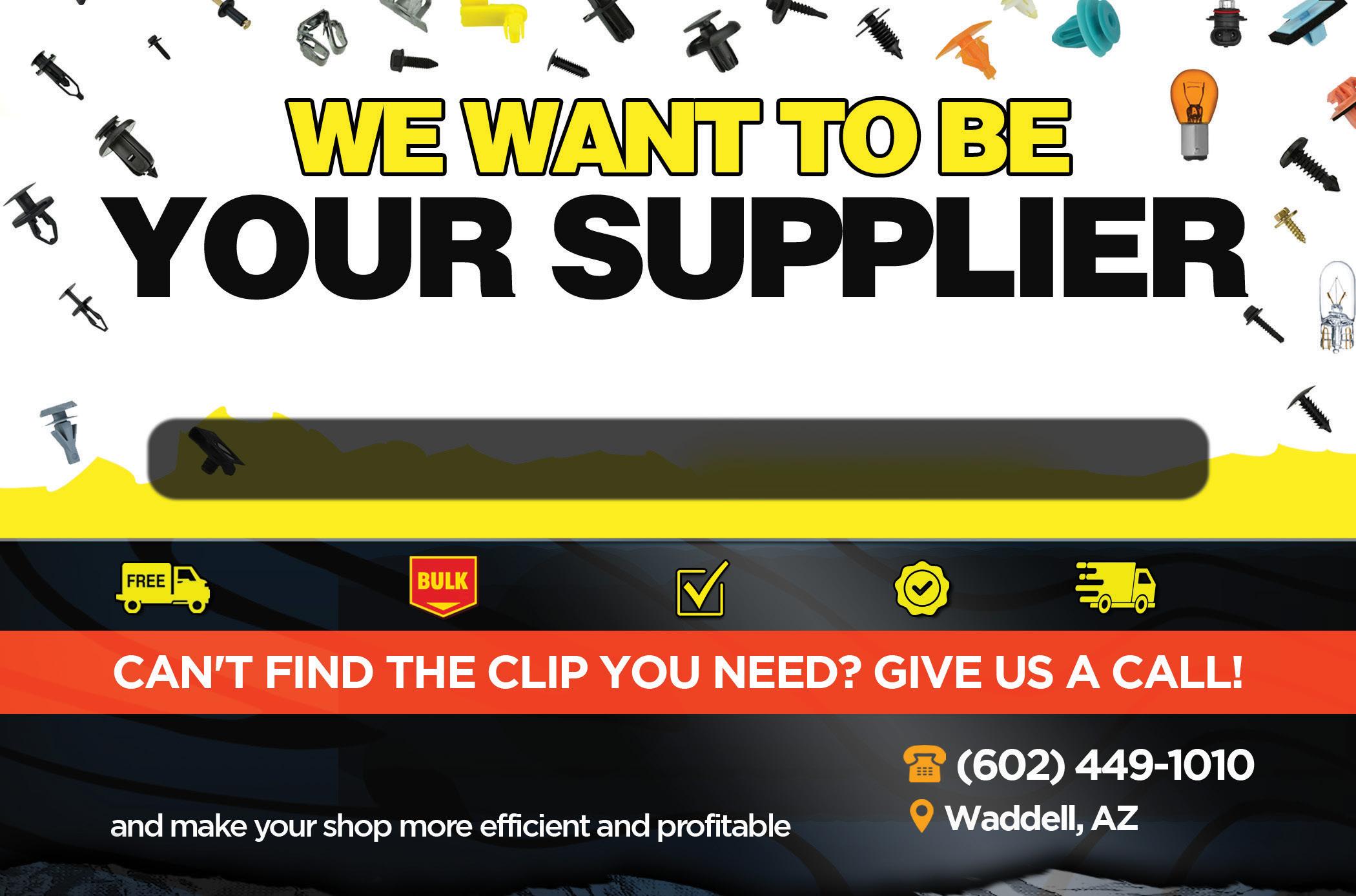


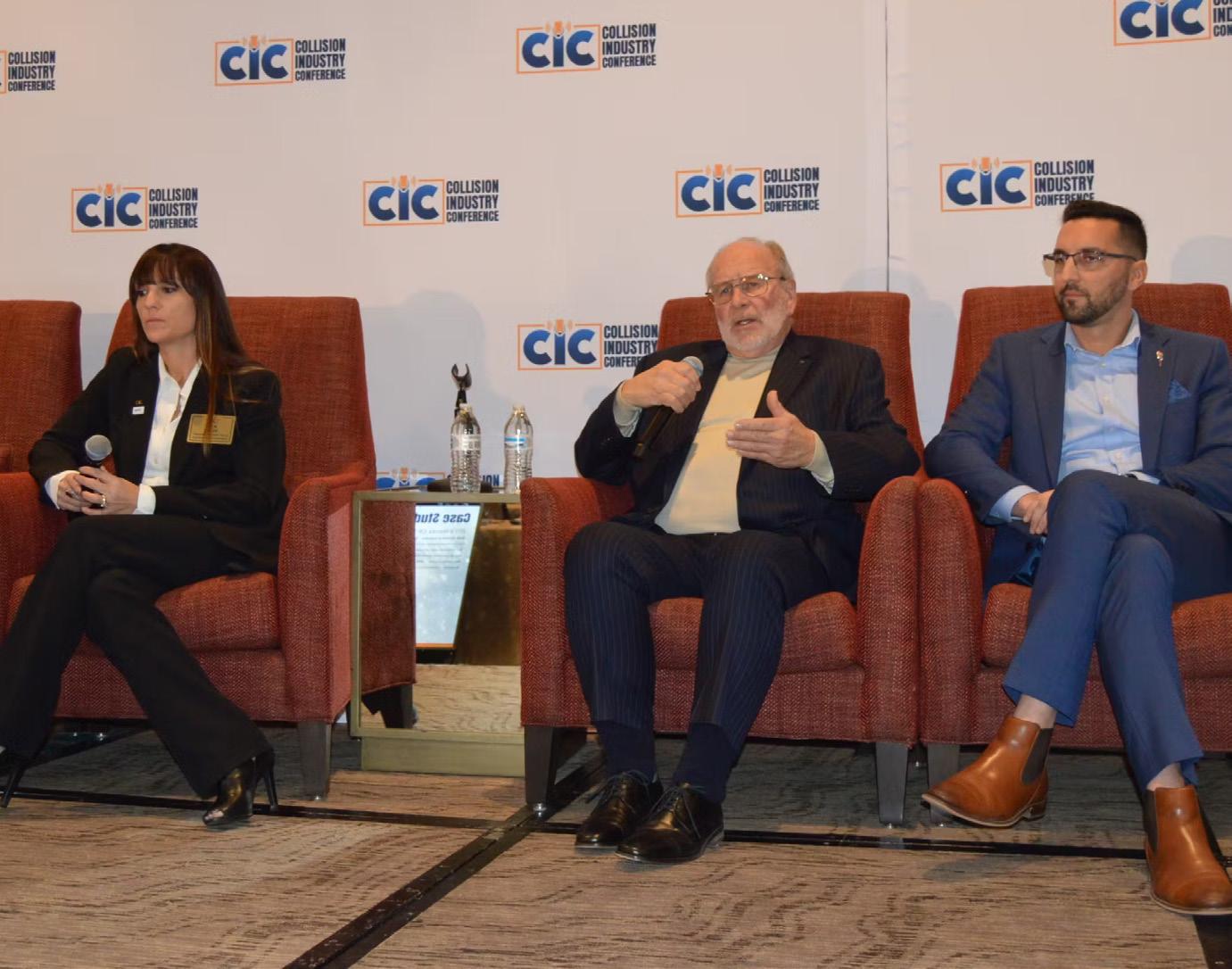
comes to you that looks like a train wreck you can call a timeout and send it back to the technician and you’re not penalized for stopping the process.”
Stein noted the committee participants include representatives of General Motors, Hyundai and Genesis, Mazda, and Nissan, who have a stake in seeing their vehicles repaired properly.
“One of the things I wanted to talk about is how do we help talk about protecting the brand of the manufacturer,” she said. “When there’s a collision repair event, that tests the manufacturer’s brand. And when there’s a poor repair experience, that could mean that the customer has a negative brand impression.”
Reichen said the committee would continue to dig deeper on the topic for another presentation.
“Where did those total-loss vehicles go? Were they crushed? Or did they end up back on the roads again? That’s certainly problematic.”

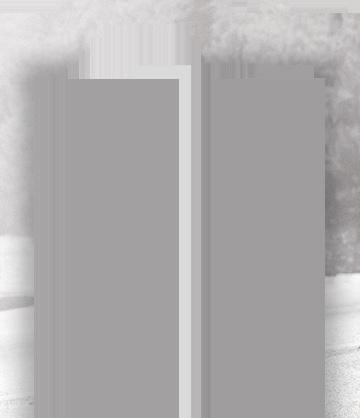



The owner of a collision center in Albuquerque, New Mexico, has reported that people are setting fires and pitching tents around her business, according to a KRQE News report.
“In the past two years, it has drastically increased, and it is out of control, in my opinion,” Patti Garcia, owner of Duke City Auto Body and Collision Center, told KRQE News.
According to Garcia, her business has also dealt with multiple break-ins and homeless people setting up tents in front of their shop, scaring customers away.
Garcia says people start the fires to stay warm during the winter months, but they’re endangering her business. She shared an incident from the week prior where a fire started by someone sleeping in a van spread and took out an electrical pole. This incident impacted her business and forced them to close for a day while it was fixed.
There were multiple fires that she has mentioned to reporters. “My biggest concern is our building burning down,” said Garcia. “We don’t know if we’re going to have a business to come to or when we’re going to get the call.”
Garcia said she reached out to city officials and law enforcement for help, but nothing seems to be resolved. As of January 26, Garica confirmed to FenderBender that she has still not heard back from the City of Albuquerque.
The owner of a car dealership and autobody shop in Export, Pennsylvania, promises to preserve a historic landmark after moving his business to a new location on Route 66, according to a Trib LIVE article.
The Volkswagen “bug on a pole” on Route 66 has been a local landmark for over 50 years. Now, it marks the new entrance to his business.
“It’s an icon,” said Michael Pampena, the owner of Murrysville Auto Sales and 66 Custom & Collision. “Everyone knows the bug.”
Created in 1970 by Ed Britz, the original owner of Excel Auto Body, the elevated car is actually fashioned from two front ends welded together. It was restored in 1980 shortly after Al Furney of Delmont bought the shop. In 1994, Furney and shop workers collected parts to build a replacement.
The only time the car has been off the pole in the past half-century was between 2010 and 2013, when what was supposed to be a quick round of maintenance turned into a nearly threeyear hiatus.
The U.S. ranks as the No. 5 largest EV leader in the world, with China being No. 1 according to a study by DriveElectric.
The study calculates the rankings based on EV share in sales in their countries, the number of publicly available fast electric vehicle charging points, and annual sales increase. The U.S. received a score of 6.55/10 stars, while China received 7.10/10 stars.
The study shows that the share of sales for EVs in the U.S. is 7.7%, while Norway had 88%. There are 21,000 publicly available fast electric vehicle charging points in the U.S., while China has 760,000. The U.S. had a jump of 70.21% in EV sales from 2021-2022, while India had a 300% increase in the same period.
The U.S. was ranked No. 3 in lithiumion battery manufacturing capacity, with China being No. 1. The study notes that the U.S. is expected to double its capacity by 2025, with 13 new plants predicted to be operational in the next five years.
More studies on EVs by DriveElectric can be found at drive-electric.co.uk.
The average cost of full-coverage car insurance is projected to rise by 7% in 2024, after a year of rate hikes, according to Insurify’s 2024 “Insuring the American Driver” report.
Data sourced directly from Insurify showed that the average cost for a fullcoverage car insurance policy rose to $2,019 last year — a 24% increase — as insurance companies grappled with profitability amid supply chain issues and climate change.
“A bit of the pressure is lifting. Drivers can expect some industry stabilization as we enter the second half of 2024,” says Betsy Stella, vice president of carrier management and operations at Insurify.
Findings also show that lower-income states are feeling the price hikes more severely. Out of the top 15 states paying the highest proportion of car insurance premiums relative to income, only four have a median household income over the U.S. average, according to Insurify.
For example, drivers in Mississippi, the lowest-income state in the country, spend 3.4% of their income on car insurance. In comparison, residents of Utah, which has nearly double the median income of Mississippi, spend only 1.8% of their income on car insurance.
The report also reveals:
• Car insurance rates increased 638% more than wages increased on average in 2023
• 62% of Americans reported their car insurance rates increased in 2023, with 22% reporting their rates increased more than once
• 45% of drivers surveyed reported they didn’t take any steps to reduce their premiums, despite seeing rate increases
• New York is the state with the most expensive car insurance premiums in the country, with the average full-coverage policy costing $3,374 a year— 67% higher than the national average.
• Increasing deductibles and lowering coverage limits are the most popular ways drivers cut costs.
• The report features findings from Insurify’s database of more than 97 million car insurance quotes from partnering insurance companies, as well as Insurify’s survey of 1,900 drivers across the country.
Convenient Brands announced its acquisition of Web-Est, a provider of collision estimating software to independent body shops in the U.S., according to a news release.
Most auto body shops use software to estimate the cost of parts and labor required for a vehicle repair and then use that cost estimate to get customer and insurance carrier approval. Web-Est provides an intuitive, browser-based estimating software platform that offers a seamless user experience, according to the release.
Web-Est has generated long-term growth due to the effectiveness of its software and its ability to increase efficiency and estimating accuracy for customers.
“We congratulate Eric Seidel, Carey Paris, and the Web-Est team on their strong momentum in the marketplace,” said James Clippard, chairman of Convenient Brands and managing director of The Beekman Group, the majority owner of Convenient Brands. “Web-Est’s software automates a critical function for independent body shops and is complementary to other products that Convenient Brands offers, including our shop management software and payment processing tools.”
Eric Seidel, CEO of Web-Est, added: “With the support of Convenient Brands, we are poised to accelerate our growth trajectory while at the same time offering a larger set of solutions to our customers, enabling them with more automation and efficiency. I look forward to supporting both Carey Paris and Convenient Brands on their new path.”
Convenient Brands is a platform of business technology companies that provide enterprise software and payment processing services, mainly to the auto dealership and auto aftermarket industries but also to customers in the government, property management, and other diversified industries.
The Beekman Group is a private equity firm, based in New York City, focused on building industry-leading companies in the healthcare, consumer, and business services sectors.
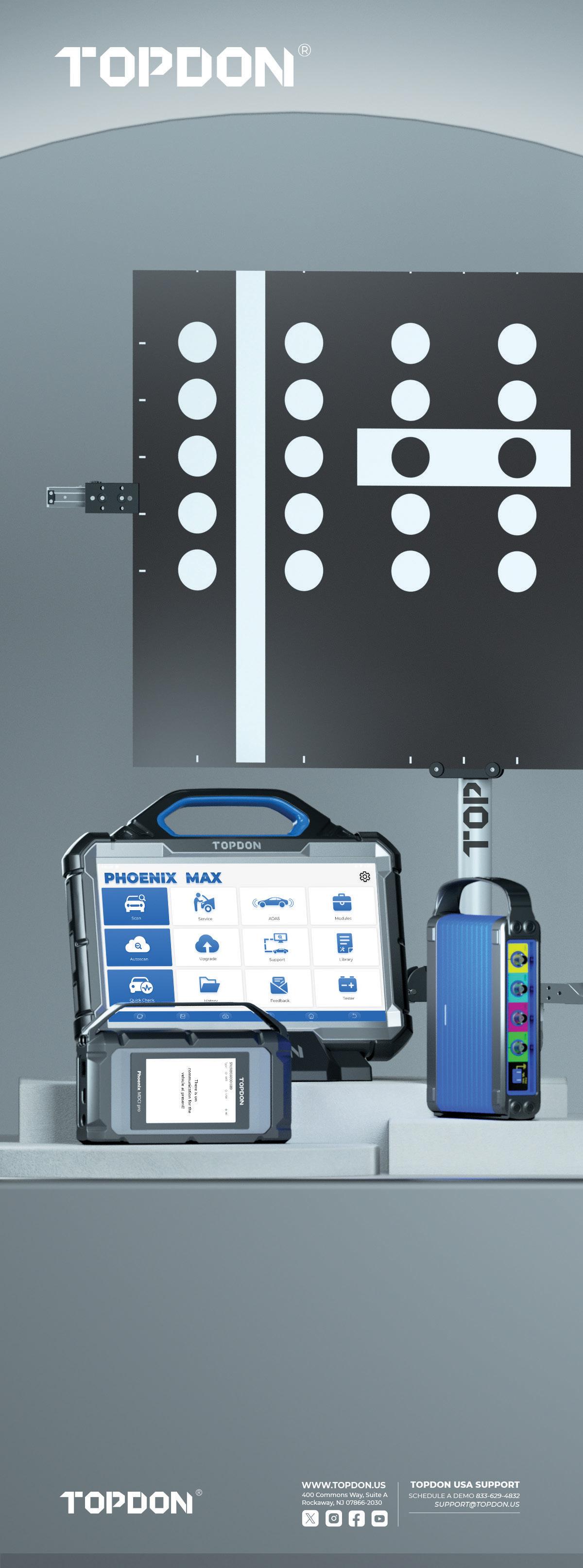

The Auto Care Association voiced opposition to a bill in Idaho that aims to limit the use of aftermarket parts, according to a press release.
The bill, SB 1233, is a proposed amendment to Section 41-1328B of the Idaho Code. It was introduced in late January but has already moved quickly through the Idaho State Senate.
According to ACA, the bill would add headlamps, fenders, hoods, tail lamps, and bumper components to the definition of aftermarket crash parts; add warnings to written disclosure statements telling consumers that nonOEM crash parts could affect vehicle safety and function; and suggest that consumers inquire with a qualified industry expert or repair shop before using non-OEM crash parts.
ACA fears that, if implemented, the bill would result in insurers being accused of unfair claim settlement practice for specifying the use of nonOEM aftermarket crash parts, or repair shops getting in trouble for the use of non-OEM aftermarket crash parts if the customer has not received a written recommendation to do so.
The Idaho State Senate Commerce and Human Resources Committee heard testimonies from those supporting and opposing the bill, including ACA members. The session ended with a decision to hold the bill in committee, where it will be unable to move forward.
“In Idaho specifically, our industry provides over 12,492 jobs, generates $1.6 billion in economic activity, and provides $679 million in wages,” argued Tod Moore, manager of grassroots and advocacy for ACA. “SB 1233 would have immediate, detrimental effects on this otherwise vibrant aftermarket ecosystem, not to mention the negative effect it will have on consumers.
CenterOak announced the sale of CollisionRight, a provider of auto body
repair services, to Summit Partners, according to a news release in January.
CollisionRight Founder and CEO Rich Harrison will retain significant equity ownership in the business by investing alongside Summit, as will several other members of the company’s senior management team.
CollisionRight has acquired 89 collision repair shops since being founded in 2020.
“CollisionRight has quickly established itself as a market leader in the collision repair industry, and we are excited to help Rich and his team extend this leadership position,” said John Carroll, a managing director at Summit Partners who will join Rich Harrison on the company’s board of directors.
“The collision repair industry remains highly fragmented, large and, in our view, very attractive,” added Robert Grady, an advisory partner at Summit who will also join the company’s board of directors. “We look forward to working closely with the CollisionRight team to capitalize on this opportunity and enhance the company’s position as a growing, highquality, customer-focused company.”
The terms of the transaction were not disclosed.
Founded in 1984, Summit Partners is a global investment firm that invests across growth sectors of the economy and has invested in more than 550 companies in technology, healthcare, and growth products and services.
Mechanics in Madison County report an increasing number of vehicles coming in with damage from deer collisions, according to a WAFF 48 report.
Repair estimates can range from $2,500 to $20,000, depending on the type of damage, as stated by WAFF 48.
Deer have always inhabited the mountains of Madison County. According to experts, they are now venturing into the streets. This behavior is attributed to two factors: the colder weather and
increased development pushing deer out of their natural habitat.
Experts from Triple A also recommend using high-beam headlights, honking the horn when a deer is spotted, and braking firmly when it’s safe to do so. They advise against swerving the car to avoid a deer.
An auto shop staffer in Lincoln, Nebraska, named and adopted a kitten with his girlfriend that he rescued, according to a Facebook post by the Capital Humane Society.
On January 26, Midtown Body & Paint received a call from animal control for assistance with a cat stuck inside a bumper just a few blocks away.
Travis Ziemann was able to remove the fender liner of the vehicle to gain access to the kitten hiding inside the front bumper.
On the day the kitten was made available for adoption by the Capital Humane Society, Ziemann and his girlfriend, Renae Goodwin, adopted him and named him, appropriately, “Bumper.”
Gerber Collision & Glass is abandoning its plan to convert an old CVS Pharmacy in Darien, Indiana, into an auto body shop, according to a Patch news article.
In November, the Darien City Council approved the shop with a 4-3 vote, despite opposition from neighbors who later sued the city.
In a letter to the city on Thursday, February 1, the company confirmed it would not develop the site of the former CVS.
In an email on Febuary 5 Monday, City Administrator Bryon Vana told Patch that the city attorney and other lawyers would meet to discuss the litigation and the special use permit that the city had approved for the site.
Last month, the city’s attorney, John Murphey, asked a DuPage County judge to dismiss the lawsuit, stating the neighbors failed to detail how the auto body shop would harm them.
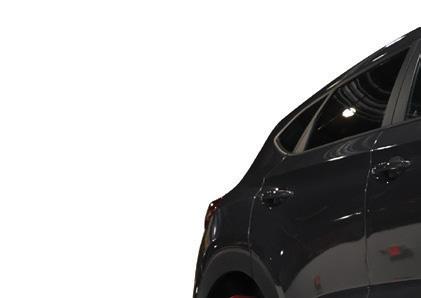

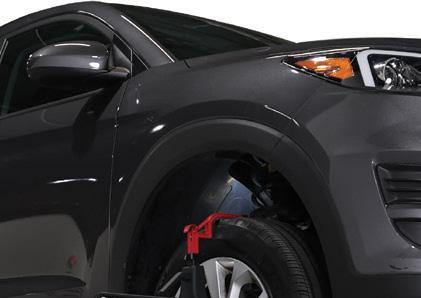
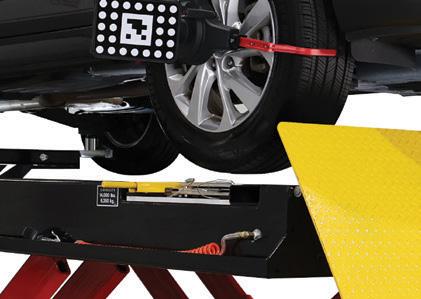

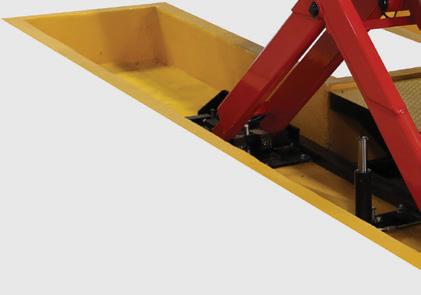
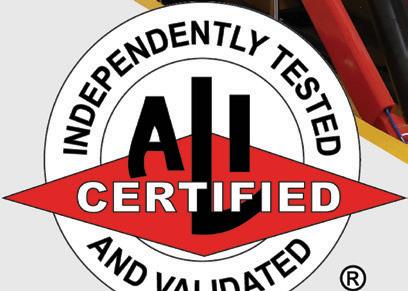
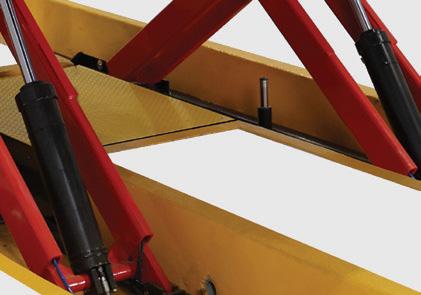
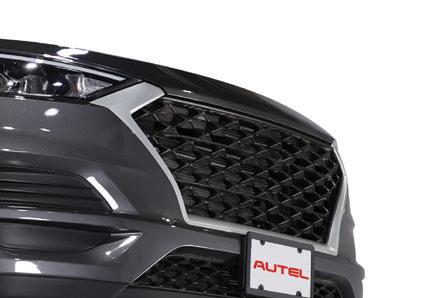
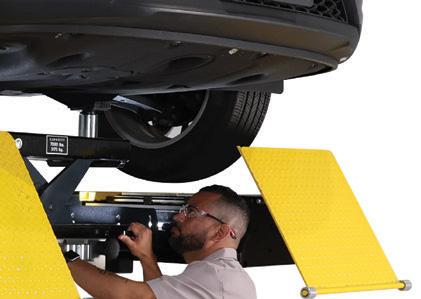
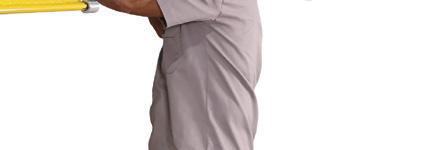
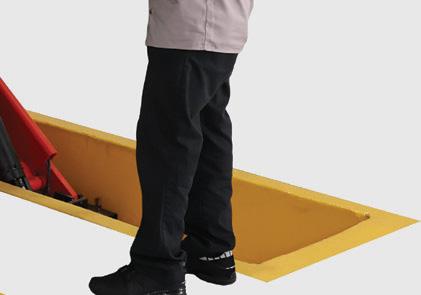

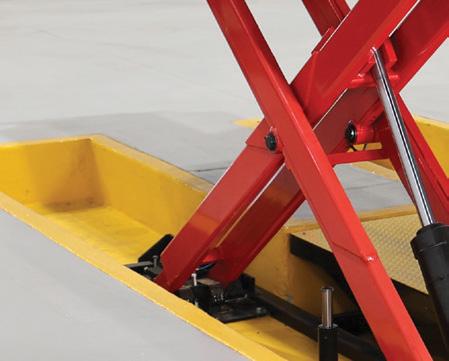
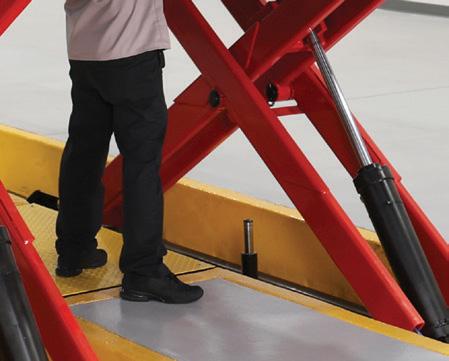

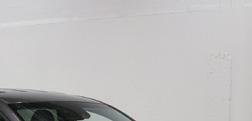
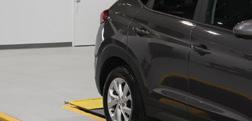

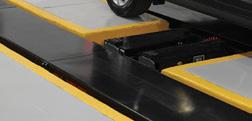

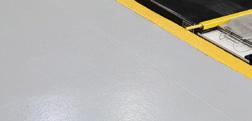

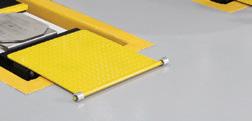



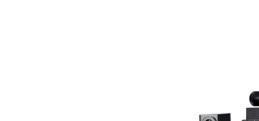
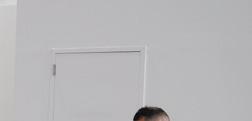


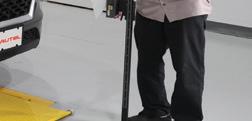


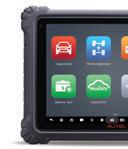

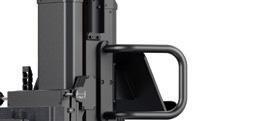
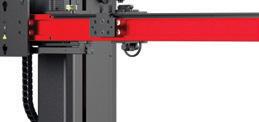
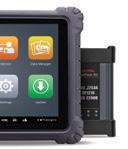




IT’S EASY TO THINK you’re running your shop carefully, but events out of your control can happen. Storms, fires, a careless driver crashing into your shop - these are all possibilities. You may be covered to repair your building and replace its contents, but how will you keep the business afloat if you are unable to operate within its four walls? How will you retain your staff if you have no work to complete and can’t pay them?
Over Zoom, we spoke with David Willett, Chief Underwriting Officer at Spark Underwriters, to find out how many shop owners and operators leave themselves exposed to loss without this coverage. He also serves on the Automotive Management Institute Board and several Collision Industry Conference committees.
CAN YOU EXPLAIN EXACTLY WHAT BUSINESS INTERRUPTION INSURANCE IS?
As the name implies, it provides businesses with financial assistance if something interrupts normal business flow, Willett explained.
“It’s for if you have a storm, or a fire, or something else that is a covered peril, something that damages your property or somehow causes an issue where you’re not able to perform work,” Willett said.
Willett champions Business Interruption insurance, especially in the field of collision repair. “You’re going to need to pay your employees, or you’ll lose them to competition. We know how hard it is to get them to begin with.”
He added, “You’re going to want to cover the profit you would normally get, because you don’t run businesses for free. You’re also going to want to continue to pay for your continuing expenses… utilities or anything else you have a payment plan on.”
A business interruption is a covered peril that the insurance provider will step in to assist a business owner with. “But it has to be a covered peril,” Willett explained.
“It just can’t be ‘Our business is down,’ or, ‘No one is coming in,’” Willett added. “If there is an issue that is unrelated to a covered peril in your policy, then this coverage doesn’t kick in.”
“Something [like] a fire loss or someone runs a car into one of your booths or something like that,” Willett said. “There’s a lot of stuff that could stop you from not being able to operate.”
Are the standards the same for all insurance providers or do they vary from company to company?
Like a lot of other insurance types, business interruption insurance coverages will vary, he said.
“People in downtown Dallas several years ago lost their internet after a tornado hit,” Willett shared. “Not all forms of business interruption insurance covers internet but the ones we worked with (in Dallas) did. In fact, very few do.”
Willett said a shop owner should ask “Do they cover that extra expense?”
“Some will cover their loss if they have it, but I don’t know a shop owner who would rather be repairing cars than collecting insurance.” He said a common concern among owners is that rates will go up if a claim is made, which often does happen. “Plus they’re not taking care of customers, and the customers are going somewhere else.”
Also to consider, according to Willett, is waiting periods. “An industry standard is around 72 hours… After you have a claim, how quickly do want someone to work on your claim?” He also added some might have it around 24 and 48 hours, too.
Another key piece of advice that Willett shared for business owners is to look for somebody who can articulate what their business is about. “Not just somebody that got a business card with a picture of a car on it,” he jokes. A collision repairer should ask them if they know what is going on in the industry. If so, then that is a good sign that they can protect you.
Before the waiting period, Willett says a business owner must prove their loss and a history of workflow.
“Keeping good records, no matter what it is, you have to prove that the loss you’re having is not because you don’t have cars you’re working on anyways. It (the record) has to document that they’re coming through and they’ve (customers, revenue, etc.) been coming through.”
With these records, you can prove that the interruption [or peril] caused the need for your insurance to kick in.
“A business interruption insurance that doesn’t get looked into enough is life insurance and disability,” Willett said. “It’s technically not called that in the policy, usually. But when working with shops, it’s important to bring up to them that they have their life insurance in place or their disability because that can really dramatically hurt the operations because if you lost a key employee, and there are formal means to take care of that.
"A prudent business owner and a risk manager in the form of an insurance person ought to be sitting down an going through that so that it is woven in… and not just for the owner but for your key employees.”
Lastly, Willett said, “It’s not just a policy… They need to see their insurance provider as an integral part of their business.”

THIS MONTH’S COVER STORY features a shop owner/operator, Krish Chand, with three Fix Auto locations in Northern California, who’s been particularly successful in in one key performance indicator (KPI,) the customer service index (CSI).
The number of shops tracking key performance indicators (KPIs) seem to have peaked over the past several years, to about 75%.
But the benefits for those shops that track KPIs suggest they are more profitable, with respondents who track KPIs reporting $2.5M-$4.9M in annual revenue, an average repair order (R.O.) of $4,000-$4,999, and a gross profit margin of 40-49%. Compare/contrast that to shop owner/operators reporting they do not track KPIs, who reported $1M-$2.4M in annual revenue, an average R.O. of $3,000-$3,999, and a 29% gross profit margin.
These figures are part of the 2023 FenderBender Industry Survey Report.
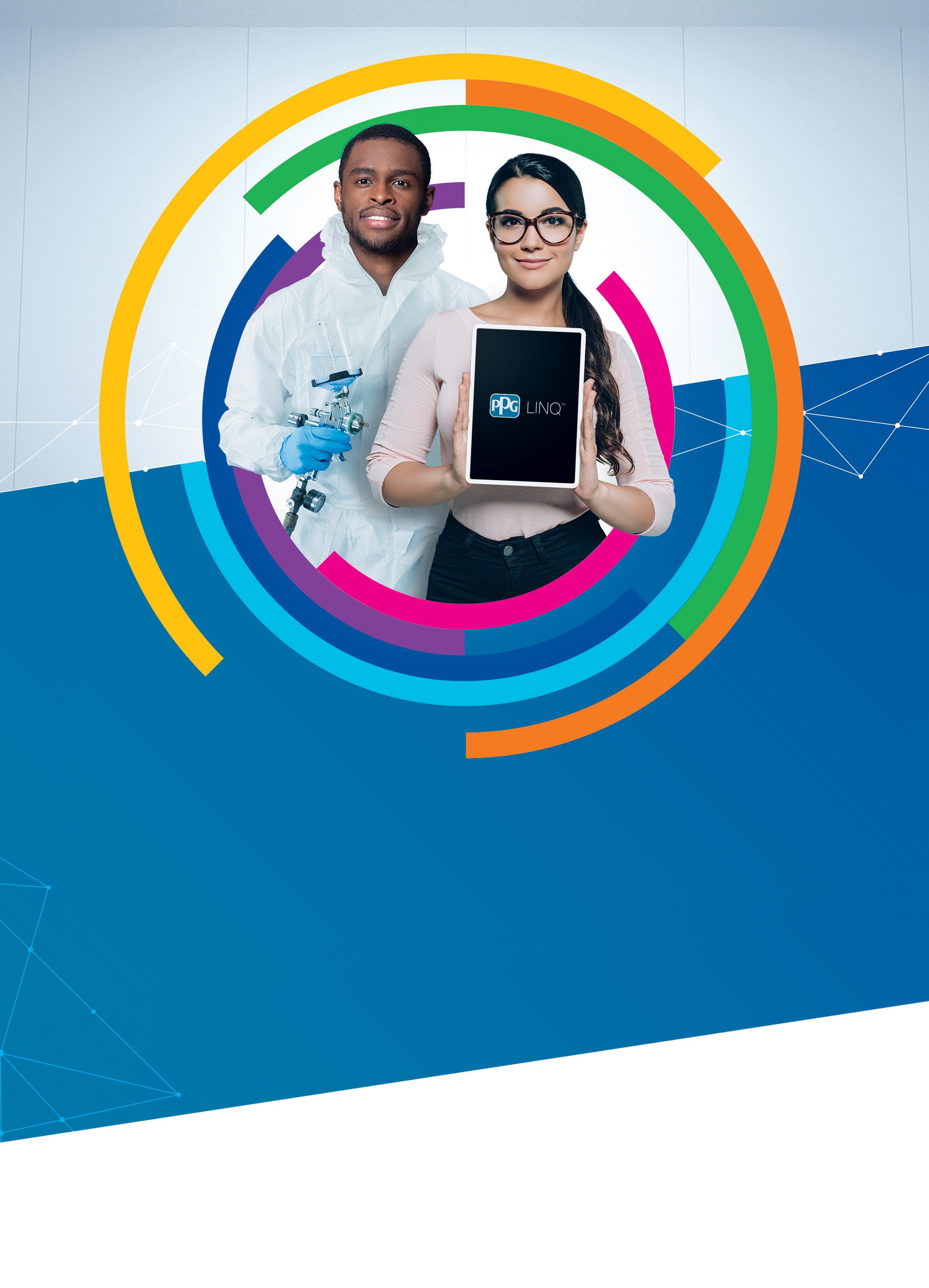
With this final installment, we explore the processes you need to capture needed repairs and procedures
In February’s part 2 of the blueprinting series, we discussed the need for a written process to follow, blueprint teams, vehicle check in and parts carts.
After the vehicle has been test-driven, checked in, unrelated prior damage (UPD) documented, pre-scanned, necessary photos confirmed, parts carts staged, and estimate file tabs completed, we still can’t start disassembly! Did we preorder any parts? If so, they need to be brought to the vehicle. I shouldn’t need to say this one, but never bring a car into Blueprint without having a signed “Authorization to repair” from the owner. My shop has a “No signed authorization, no start” policy, period!
One more thing that every shop struggles with, including mine, is a possible total loss. There is nothing much worse for the shop and the customer experience than to have a non-drive sit in the parking lot for three to four weeks and then bring the car in, to find out only it is a total after a blueprint. I can hear what some of you are thinking. “Greg, I love them, as we make a ton on total loss charges.” Granted, that may be true, but I only want cars being blueprinted we are going to repair. Fixing cars should be our goal, or at least it’s mine, anyway. There are times pre-writing a parking lot estimate is necessary to prevent this time bandit.
While the tech was busy checking the car in, setting up parts carts, mapping the windshield etc., the writer after confirming estimate tabs, photos etc. are completed should be building the estimate with some of the major components simultaneously. After the writer has prebuilt the estimate, they can then be looking at OEM inspections & procedures. I understand, some of these can be over 800 pages long. There is some software out now (and in the works) to save time by reading the estimate for needed procedures. They are not perfect but can be helpful.
Without listing every step in our blueprint process, we are now ready for the tech to start removing the damaged & R&I parts. When a tech removes, say, a foglamp, it’s placed on the table next to the writer. The writer then photographs the part and enters it into the estimate as either “R&I” or “replace.” R&I foglamp goes on the R&ICart or damaged foglamp goes in the Red-Cart. Please read this carefully: Every removed part
goes through this process at my shop; it doesn’t matter if it’s a radiator or mudflap. This is about as visual as you can get. The writer is the only one who can place the parts on the two carts. Obviously, the tech is fully capable, but this ensures everything is entered on the estimate. R&Is are a huge profit center, and thousands of R&I are missed every day in shops.
We bag and tag every fastener and label every bag. Our bags are attached to chip clips tied to the side of every cart. You can even number the bags, as an example: Camry/Frt Cvr R&I/ No.1., Camry/Frt Cvr OH (overhaul) /No. 2. This way, the bottom bag on the chip clip is the last bag you need to grab in reassembly when reattaching the front cover.
Built in our process is all blend/no blend decisions are made. Necessary OEM inspections are done now. Mike Anderson has taught me well by using the “Tell, don’t ask” policy with insurers. This means we don’t have time to wait for approval from an insurer to do a procedure or not. If we know we need to do it, approval or not, prove it done with photos, then they know we did it and there is no chance of fraud from work approved by an insurer but not done by the shop. Also, be very observant of one time use bolts, fasteners, interior trims, glass etc. These can be found in OEM procedures, and some are even listed in the estimating software.
Lastly, back to what Steve Trapp said in part 1 about the “question mark removal department.” How far do we need to go to prevent downstream supplements and find all the damage? Do we need to pre-measure this vehicle? Probably 50%+ of the accident vehicles need a pre-measurement, but probably fewer than 10% get one and leave with damage. As far as what parts to remove, well, it’s every part that needs to be removed. This means suspension, cooling, interior, seatbelts, glass, airbags, etc. I know some are saying, “You don’t understand, Greg. I just don’t have the room or enough bays,” or this or that. I have worked in as bad or good conditions as anyone reading this, trust me. If we want to give the customer a great experience after a car accident, have a culture where the work is fun, make a 20%+ net profit, and we must use the brain God gave us and figure it out.
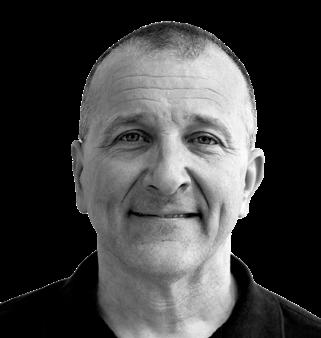
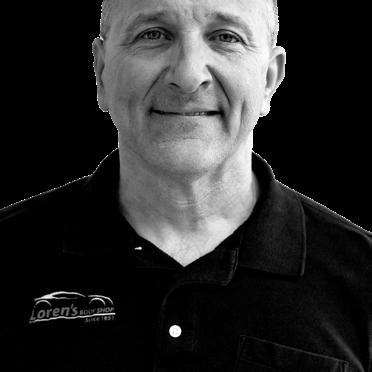
EMAIL: greg@lorensbodyshop.com
ARCHIVE: fenderbender.com/lobsiger

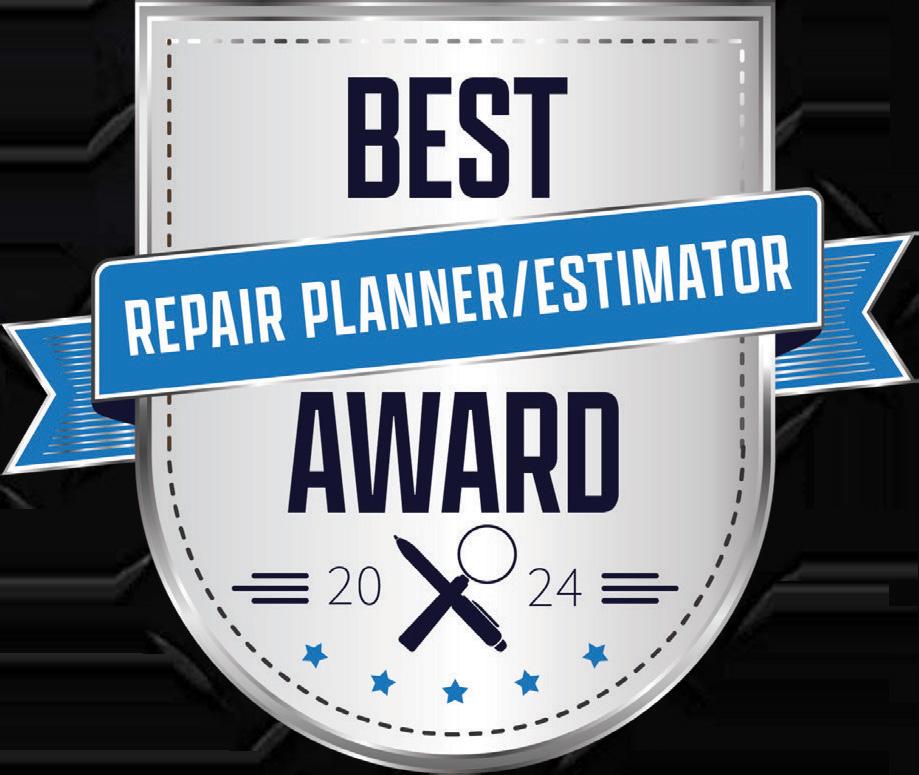


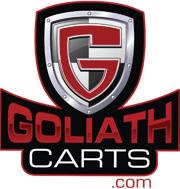





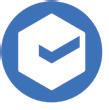

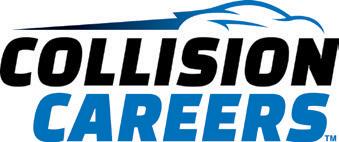



Pacific BMW’s body shop manager attracts staff with a road map for success
By JAY SICHT | Photography courtesy of PACIFIC BMW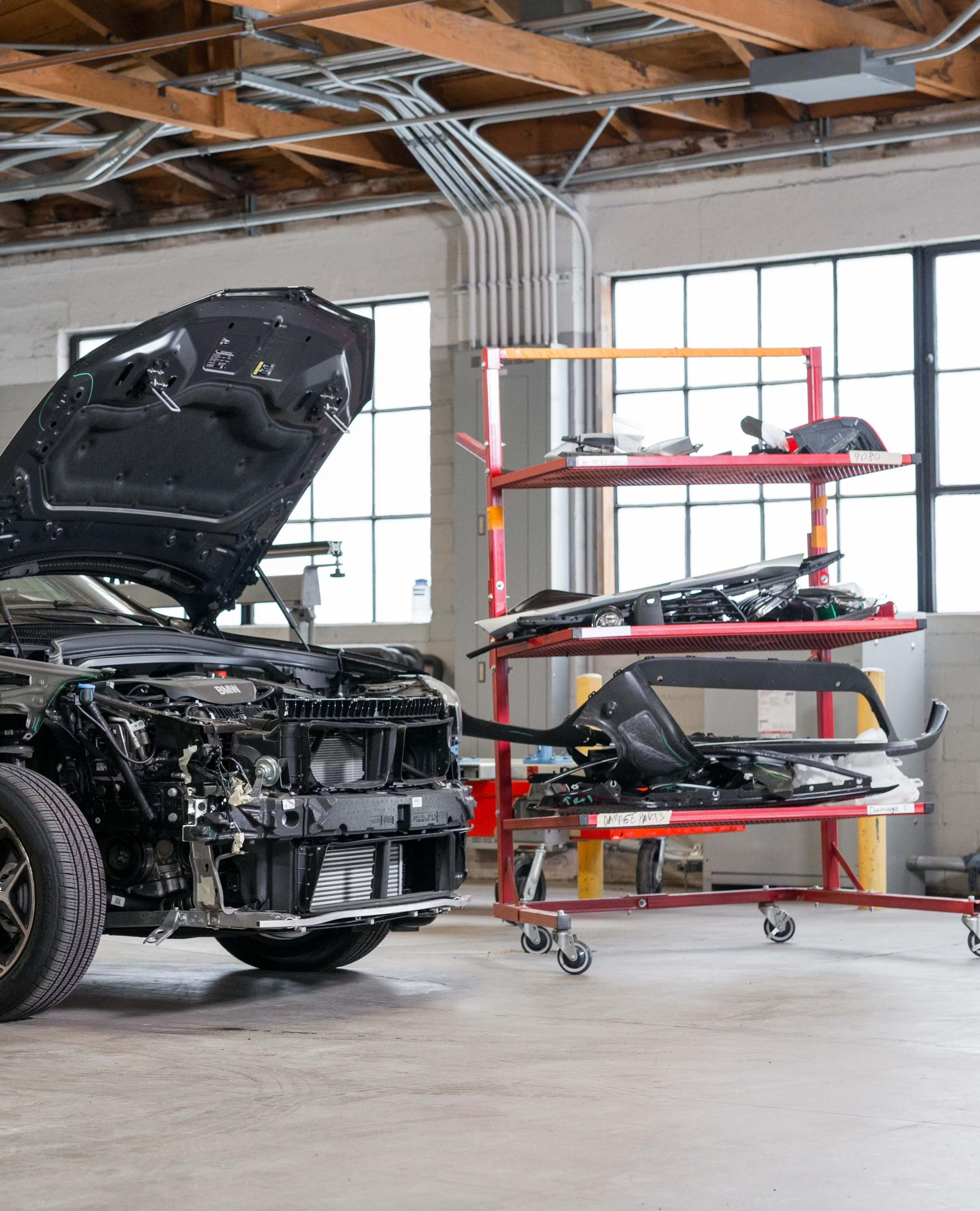
FROM “BOOMERS” TO “ZOOMERS,” much has been written about what defines the generations in today’s workforce and how to motivate them. Their different exposures to culture, technology, and world events often give them unique opinions and ideas. But what they share is a desire for less stress in the workplace and more time to spend outside of work, even if that’s something Generation Y (millennials) and Z are known for.
Andrew Batenhorst, body shop manager at Pacific BMW in Glendale, California, had long been a convert to lean, appreciative of how it could contribute to smooth operations and a greater life/work balance. He figured it would be a godsend at his new home. But what would it take to implement it?
Upon taking over as shop manager about six years ago, Batenhorst was shocked to find the shop was hemorrhaging money and had a high rework percentage. Technicians, understandably so, were afraid of losing their jobs.
“I peeled back the layers of the onion, so to speak, and I began to get very worried if I had made the right choice of leaving the shop I had come from,” he recalls.
He began by assessing the situation for the first two to three months, getting to know the staff and how they work. He then laid out a rough draft of what it would take to implement lean in the shop. He focused first on creating standard operating procedures for quality control and repair-planning.
The shop repairs only BMWs and is a BMW Certified Collision Repair Center (CCRC), including being i-Certified to repair carbon fiber structures of the electric i-Series cars. Lean can be successful in any environment, but the repetitive work that comes from working on one make with similar construction and repair methods lends itself particularly well to implementing standardized processes, he says.
“Within a year of us being on the verge of closing to then come out making, I think, nearly 15 to 17% net income from that kind of turnaround – it blew everybody away. The dealer owner and the aftersales director were shocked. It didn't come overnight. But they
were very, very pleased to see the numbers steadily increasing month after month and getting things dialed in. That was extremely rewarding to do that.”
The shop had been using a different paint brand, but since arriving at the shop, Batenhorst had wanted to leverage the resources of AkzoNobel’s Acoat Selected program available through the Sikkens brand. Batenhorst had services through that program, which include consulting services, management training, financial benchmarking, coaching, and networking at his previous shop, formerly known as Pride Collision Centers. After presenting a business plan to the dealership owners and his reasons for switching, AkzoNobel Services Consultant Jeff Baker helped with additional steps to complete the transition to lean.
“We had a good foundation from what I started with, including putting up SOP boards and doing the 5S procedures. Then Jeff came in to help work on some of the higher-level goals.”
Baker helped revise the SOPs to make them easier to understand and to reflect repair processes required by newer BMW technology. He also helped with what AkzoNobel refers to as the “WIFM,” (pronounced “whiff‘em”), or “What’s in it for me?”
“That’s really the big piece of the pie for an employee who's worked in a traditional shop for so long,” Batenhorst says. “To a certain degree, you're going to get compliance for all these ideas; you're going to have employees who are just doing what they've been told to do.”
But he and Baker wanted to take the implementation further than that, to tie in the WIFM and how the changes could benefit each staff member.
“In a traditional shop, you can expect the body tech to roll in from 7 to 7:30, and they stay as late as eight/nine o'clock at night, assuming it's a busy, normal shop,” he says. “That leads to a reduced home life when you're spending an enormous amount of time in the shop. And your stress levels are high. That was one of our things we wanted to focus on: what can lean and Acoat bring to the
shop to help people live a better life and have less stress? And on top of that, we wanted to be able to develop, train, and grow and utilize these wonderful tools that exist to really enhance their overall work experience.”
It resonated with the younger workforce, Batenhorst says.
“It really made a big difference in making the work predictable, setting accountability and very transparent and easy to understand,” he says. “We have defined work instructions on the SOP boards and then tie that back into their performance reviews. And we have key metrics that they can track on their own.”
This helps drive engagement and provides the autonomy they desire, he says.
“Some of my guys who have a little bit more experience came from shops that had foremen who were yelling at them and telling them to hurry up, or ‘What happened here?’”
Shop owners and operators can expect a certain amount of workforce attrition in converting to lean, Batenhorst says, and after a couple years of trying to adjust, two veteran painters decided to quit. But for those who stayed, they “appreciate the level of organization and the standardization that we brought into the shop,” he says.
At age 40, Batenhorst is in the upper age bracket of the millennial generation. Still, he’s often asked by shop owners and managers how he relates to those from that generation and Gen Z.
“Unfortunately, society as a whole tends to place them in this certain bracket of the population [with the stereotypes] that number one, they're this unique oddball bunch that has these unrealistic demands. And then on top of that, they don't want to work. Yes, there is a percentage who I think fall into that. But there are plenty of millennials and Gen Z out there who don't fit into that mold. They just want to make an honest living, and
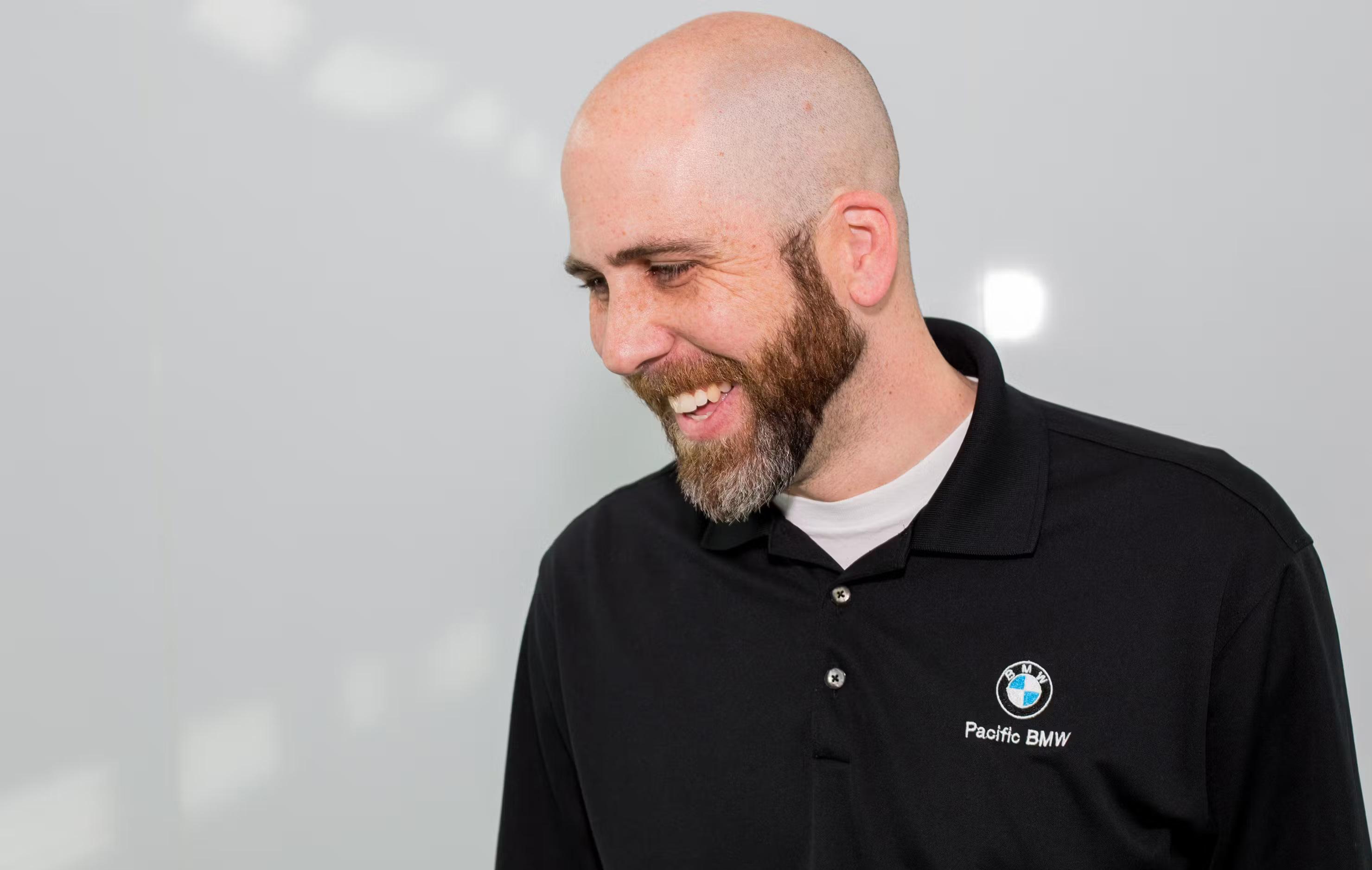
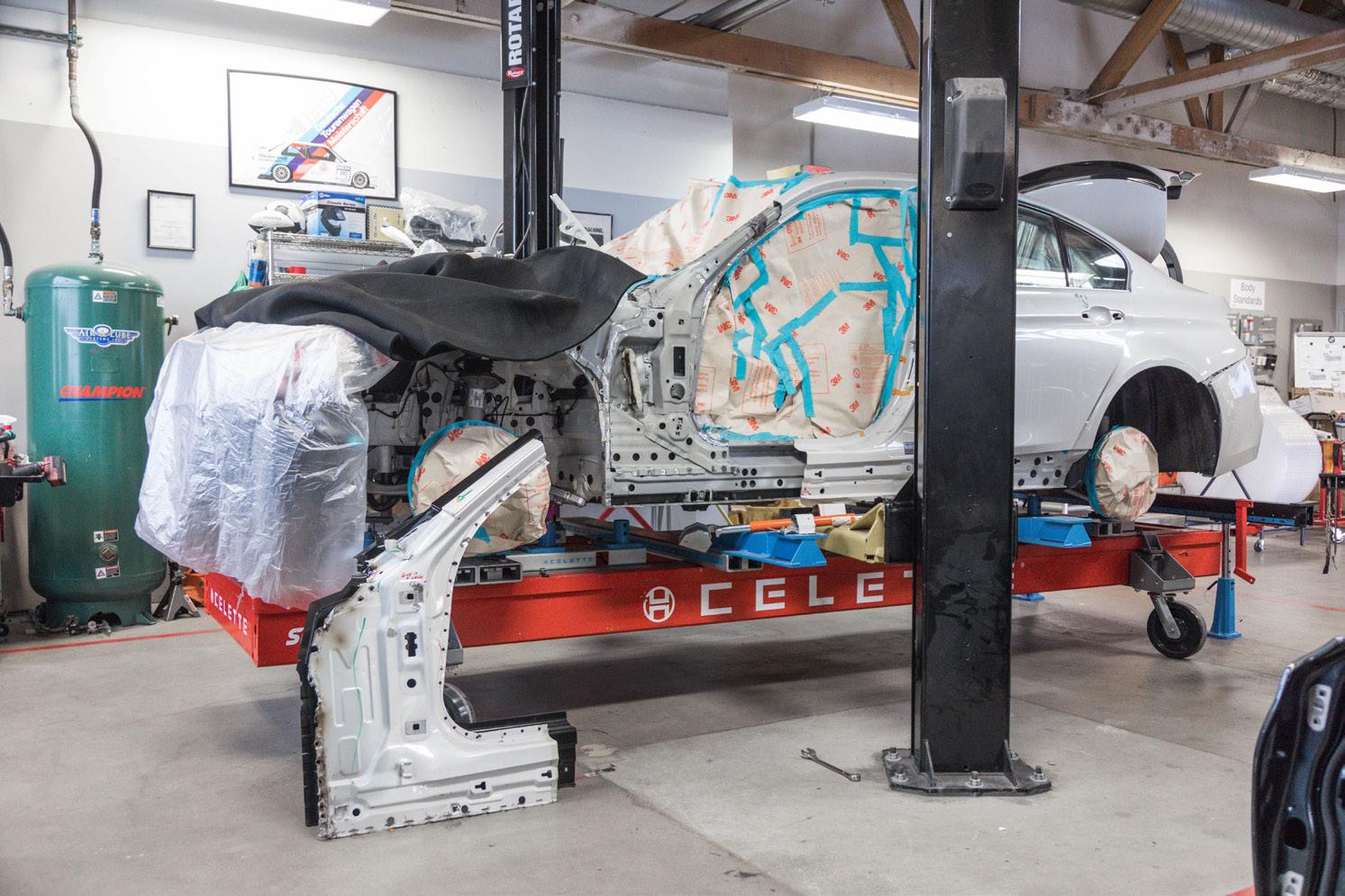
Developing and Investing Pacific BMW Body Shop Manager Andrew Batenhorst hires with career growth in mind.
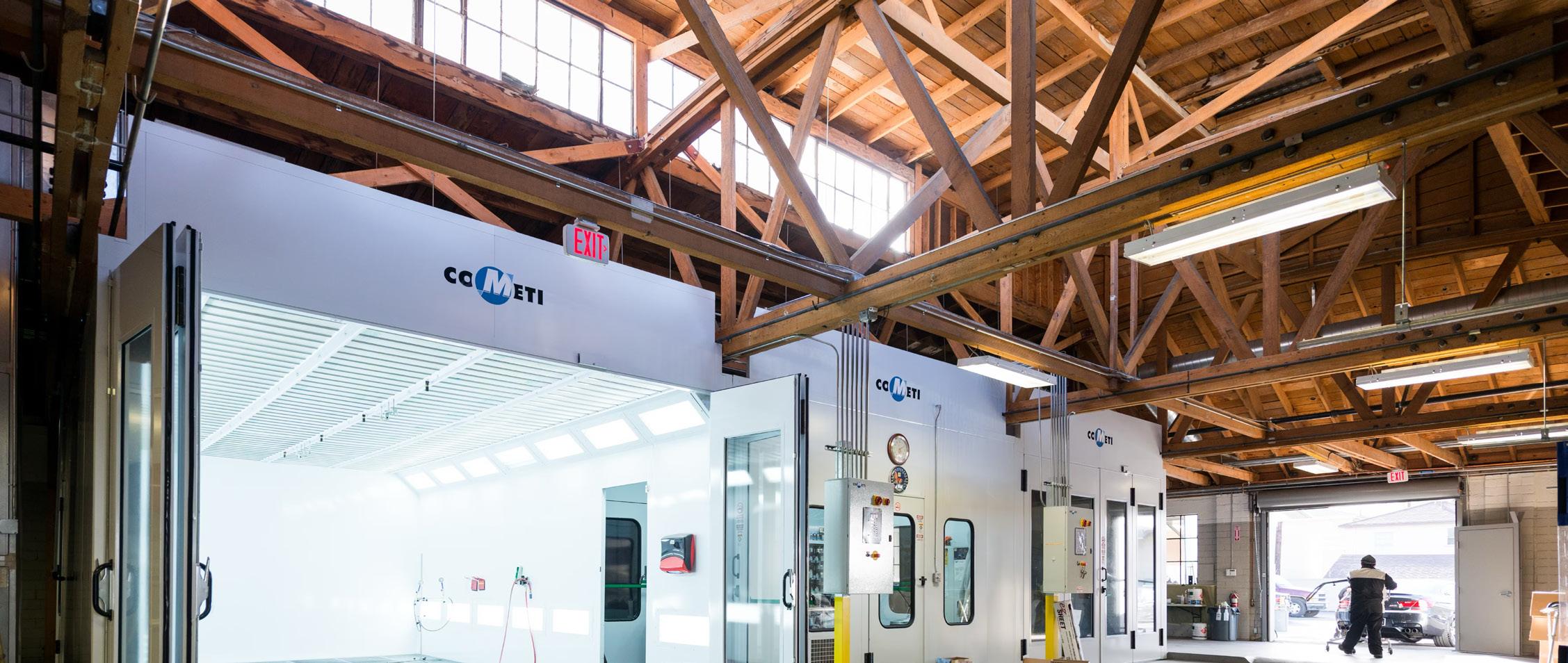
they're harder to find. But you've got to know where to find them.”
The younger generations are attracted to technology, he says, and today’s cars, especially BWMs, “are loaded to the gills with technology.”
Partnering with trade schools is a good step for most owners and operators for recruitment, Batenhorst says, but he has been particularly successful with BMW’s Service Technician Education Program (STEP) apprenticeship program, offered for both mechanical and collision repair through several BMW Group University training centers in the country.
“They all have been properly trained by BMW on how to fix these cars. So they come in with the technical knowledge. They may lack some of the experience, but they're raring to go. They want to prove themselves. Then, tie that into having a progressive way of running the shop with the system we have and us giving them clear targets for objectives on their performance reviews and prioritizing the WIFM for them. That, I think, is what keeps them engaged in wanting to work here and what makes this an attractive place for people to work. As an industry, we've traditionally done a really bad job of making the collision repair industry attractive to millennials and Gen Z.”
There is no charge to the dealership to send a technician to STEP collision repair training. Out of Batenhorst’s four technicians who have gone through the program, one of them was an existing employee in which he sent him to the nine-month STEP training. Others attended the program independently before he hired them. Two are in the paint department, and two are body technicians.
“Toward the end of the whole nine-month process, they start to get trained on how to interview, on building a resume, in how to you know how to dress for an interview, and they get to know the market of the shops that they're interested in.”
Nearing graduation, students tour the shop with Batenhorst and sometimes with a STEP instructor to get to get a feel of what makes the shop unique.
“And then they go tour some of the other CCRCs. If I had a position posted, they would apply, and we would go from there.”
With his relationship with BMW Group University instructors, he has more applicants than for whom he has a position, he says.
“It’s a very well-thought-out program,” he says. “It really helps on the collision side have a nice stable way of finding reliable candidates to get in here that generally come with a good reference from them. And I'm glad that the word gets out that
we're doing good things here that make it attractive to younger people.”
Despite industry grumblings, a lot of money can still be made in the collision repair industry, Batenhorst says.
“I know a lot of people say that all the labor times are the worst they've ever been in the history of the collision repair industry. Yeah, they're tight in some cases, but that's nothing that a DEG request can't fix, in my opinion. I hire so it's a career for somebody, and I give them a roadmap to where they can make a six-figure salary. And I do have body technicians in here who can do that, and they

really appreciate that. And that's kind of been my methodology for bringing them in.”
Although he’s open to hiring open-minded older employees, the methodology often best works for newly minted technicians.
“This type of shop is already unique. Being lean and having the Acoat system in here, that can easily intimidate a seasoned veteran of the collision repair industry. And I don't need to add all that unnecessary stress by trying to teach someone who maybe isn't open-minded to those concepts.”
He views the entry-level positions as the first step in career growth for his new hires.
“And I get a lot more engagement and performance out of them by developing them and me investing in them, rather than them just being kind of a fixture of the shop and I only expect them to be there: ‘You're here at eight, you go home at five, or you take your hour lunch, and we'll see you tomorrow.’ That doesn't work anymore.”
The career path and workplace environment make it an attractive proposition for work that is often physical and dirty, he says.
Implementation teething problems aside, “sustain,” the fifth step of 5S lean production: Sort, Set in order, Shine, Standardize, and Sustain, is one of the more difficult processes, Batenhorst says, recalling a lesson he’d learned from Kevin Wolfe of LeadersWay on the “Saltshaker Theory.”
It’s a simple study of SOPs on how the owner of a well-known restaurant chain has standardized how the tables are set up and set.
“And if the saltshaker is not in the center of the table in that exact spot where it’s supposed to be and each employee starts to do that a little bit differently, it starts to unravel the reputation of that restaurant.”
Figuratively, Batenhorst is the manager putting the saltshaker back in the center of the table each day, as needed. The need to “reorient that saltshaker” is also an impediment for some managers to implement lean, he says.
“With all the other things managers have to worry about, whether it's safety, equipment, training, insurance companies, ADAS, and performing proper repairs – all these things at the end of the day – then to have to go to your body tech and tell them, ‘Hey, you forgot to do the quality control check on that car. What happened?’ A lot of managers don't want to deal with that.”
But if he were to back off on certain requirements just because he gets pushback from his team, it could “start to unravel what we are trying to do,” he says.
“That doesn't mean I have to be a dictator about how the shop runs. It's what I like to call ‘gentle nudging.’ It's a constant gentle nudging of people back in the right
The Pacific BMW body shop is i-certified for carbon fiber repairs, such as this i8.
direction. Because to get half the boat is rowing one way or everybody's rowing in a different direction. Now the boat is just going to spin in a circle or go nowhere.”
Batenhorst says it’s up to him daily to reinforce lean principles and help staff with the cases that don’t necessarily fit the mold of the SOPs.
“Collectively, how do we address that together? The more I get the team body into handling these issues and utilizing the tools that we have, the less it sounds like it's coming out of Andrew's mouth and commanding someone to do something just for the sake of compliance. It now becomes, ‘This is our culture. This is what we do; this is how we solve our problems.”
He describes his role as being more a facilitator than an authoritarian figure.
“There may be times where someone may say, ‘You know, what, Andrew, I don't understand this part of the SOPs. Maybe we can revise those? Maybe the work product has necessitated a change, and we need to go back and adjust the SOPs.’ And that's great, too. That doesn't happen that often. But maybe once a year, we want to sit down and look at what we're doing. Does it still fit our market, for our for the cars that we work on and the customers we have?”
The time commitment, he says, is in investment that pays off in no longer needing to fight metaphorical fires. Batenhorst has “hung up his fireman’s hat.”
“You would be amazed at the amount of free time you have to do these tasks and to maintain the system,” he says. “At monthend, I go home at five at the latest. I close a few files, I'm done, and I go home. I love my job, don't get me wrong. But the best part of my day is being around my wife and my daughter. So for me, there's an incentive for me, also. If I close files every day instead of on the last week of the month, I get to go home each day and have a good time. And I don't have to go home with my laptop and stay connected like crazy.”
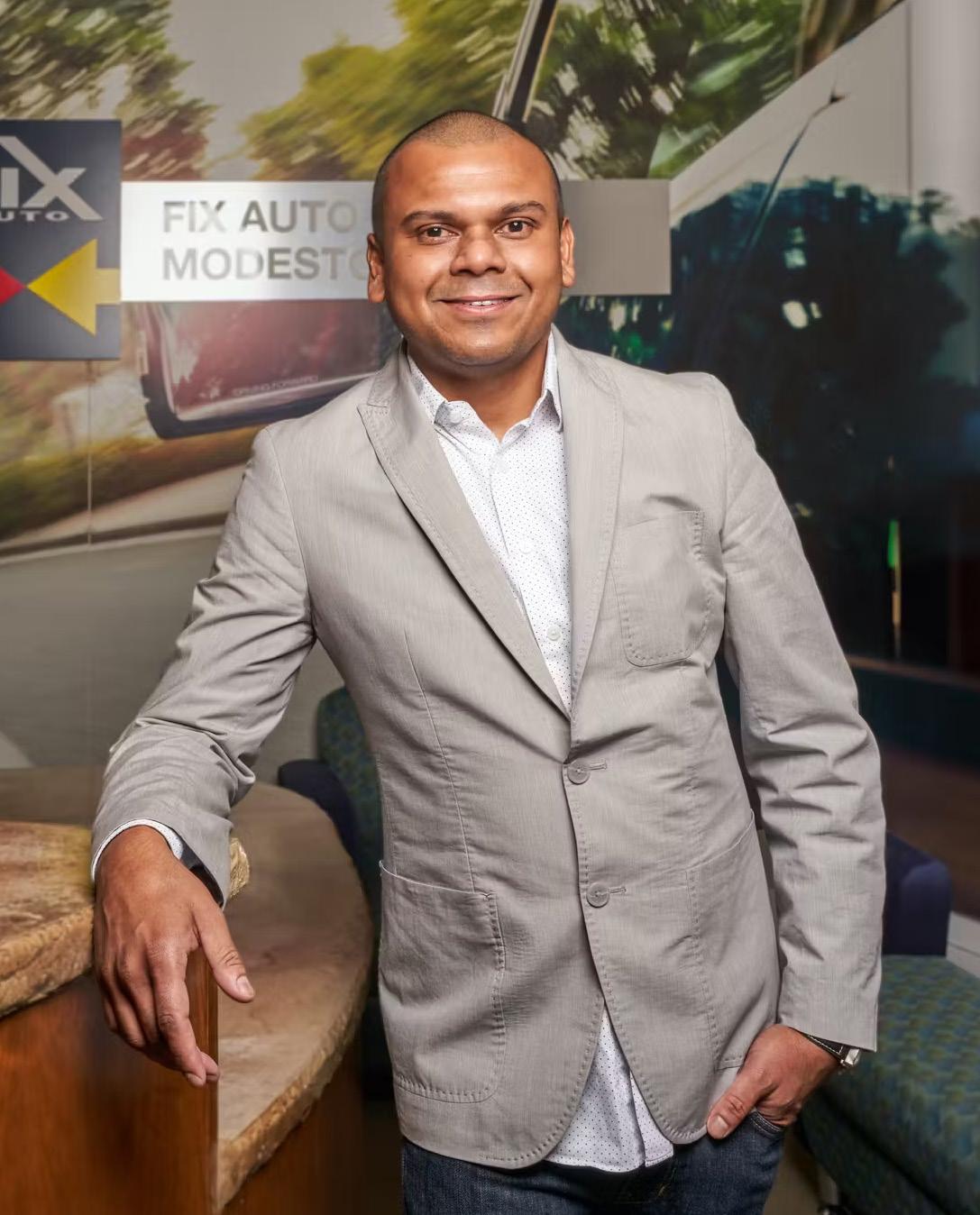
AMID A CONSTANTLY CHANGING collision repair industry, Krish Chand points to a focus on customer service and quality repairs as two factors keeping his shops humming and customers happy.
Chand operates three Fix Auto locations in Northern California: two in Modesto and one in Sonora.
He strives for operational excellence, and the Fix Auto Network has recognized Chand’s work. In 2018, his team won an award for Best CSI (Customer Satisfaction Index), and Chand
was named Rookie of the Year. In 2019, his team again won the Best CSI award, and in 2020, his team won the award for the Best Customer Experience.
Lean is foundation of a high-quality work environment
In his interview with FenderBender, Chand championed the 5S methodology of lean production as a key contributor to efficient daily operations.
According to the American Society for
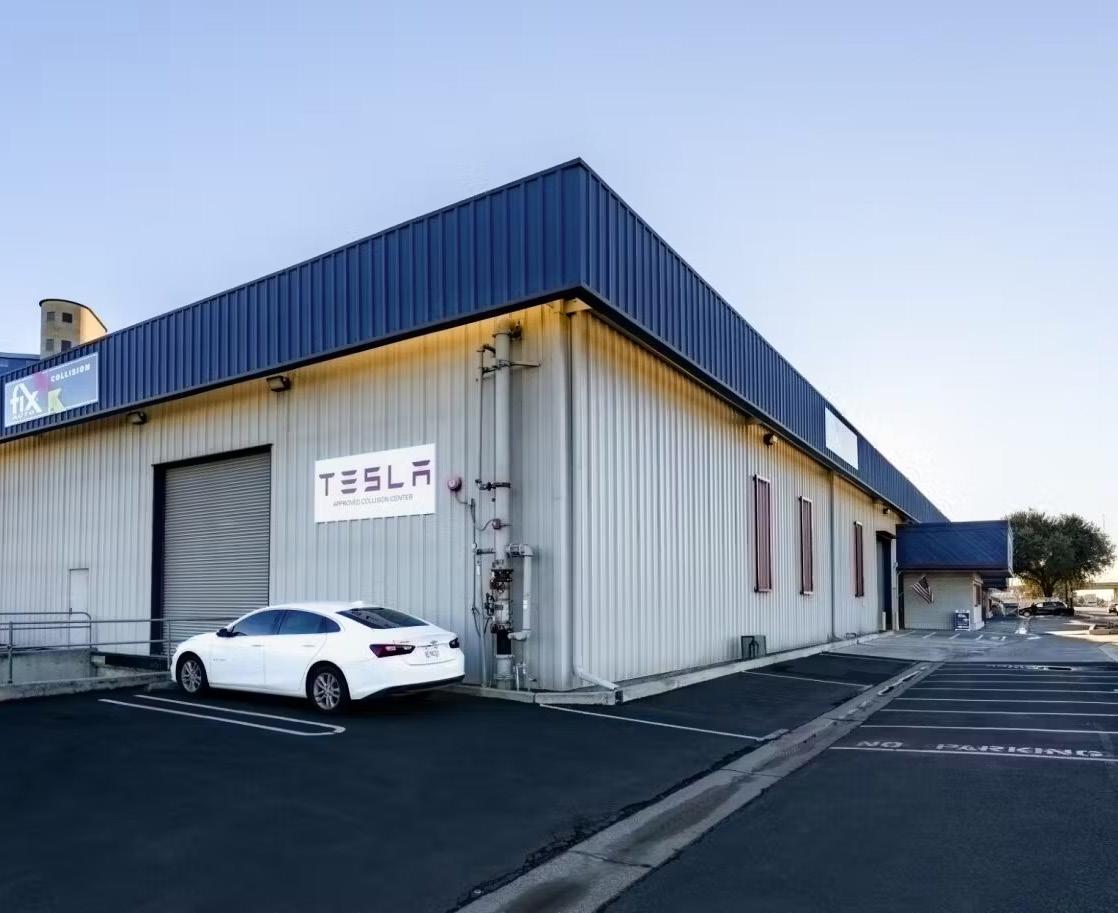
Quality (ASQ), 5S is a system that originates from five Japanese words, all starting with the letter “S”. This system aims to create a workspace that is clean, orderly, secure, and efficiently arranged to minimize waste and maximize efficiency. The components are:
Seiri (sort): Separate needed tools, parts, and instructions from unneeded materials and remove the unneeded ones.
Seiton (set in order): Neatly arrange and identify parts and tools for ease of use.
Seiso (shine): Conduct a cleanup campaign. Seiketsu (standardize): Conduct the last three S’s daily to maintain a workplace in perfect condition.
Shitsuke (sustain): Form the habit of always following the first four S’s.
This model fosters a high-quality work environment, both in terms of physical conditions and mental well-being, according to ASQ. The 5S approach is applicable in any workspace that is suitable for visual management and lean production. The state of a workspace according to the 5S standards is vital for employees and forms the foundation of first impressions for customers.
Chand implemented the 5S model in his own operation a few years ago, and he has been reaping the benefits ever since. Quality checks at each stage of the repair process keep vehicles moving and cycle time down, Chand says.
The repair planning station at the Modesto City Center location of Fix Auto is where the repair advisor establishes a repair plan for a vehicle.
When a new vehicle gets checked in, it is pre-washed and taken to a designated area for disassembly, where the damaged parts are laid out on a table in a “garage sale style”. Then a supplement sheet is written by one technician. The sheet is then taken to an service advisor. Both the service advisor and the technician will go over every damaged part of the vehicle that needs attention and have photos taken, typically by the shop’s service advisor. From that point, they will create a repair plan before parts are ordered.
A stop at the spray booth is one of the last steps before a vehicle is fully repaired according to the repair plan at the Modesto City Center location of Fix Auto.
Once all the ordered parts arrive, a body technician is assigned to do body repairs. After the body repairs are completed, the production manager will do a quality check and go through the repairs
with the body technician. When the quality check is complete, the vehicle is then taken into the painting process before undergoing an additional quality check. After the painting process is complete, the car is taken to an assembly team. At this point in the process, the repair plan is reviewed once more. In the event something was missed, it will then be remedied. If nothing more is needed after a review, the vehicle is moved to the detail team, who polishes the vehicle before a final wash. After that wash, the service advisor will do another review. If nothing more is needed, then the final photos are taken for the file and the customer is notified that their vehicle can be picked up.
The Modesto City Center location is one of three that are owned and operated by Krish Chand in Northern California.
Chand offers tours of his shop to anyone curious about how it operates, and that often includes customers. By showcasing his operation to the world, he says, he motivates his shop personnel to maintain its organization and cleanliness.
In Chand’s Fix Auto locations, the floors are regularly cleaned and polished with a “Zamboni” floor scrubber at the end of every workday.


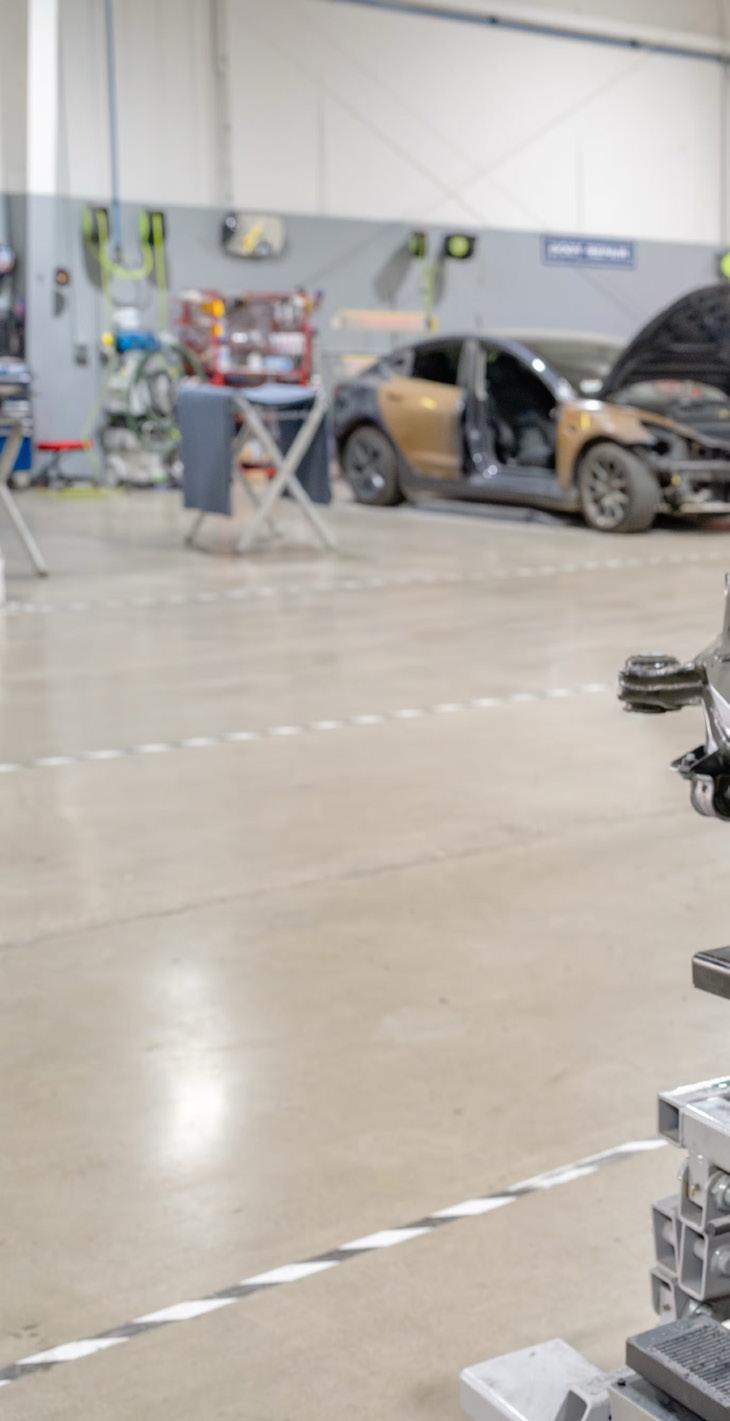
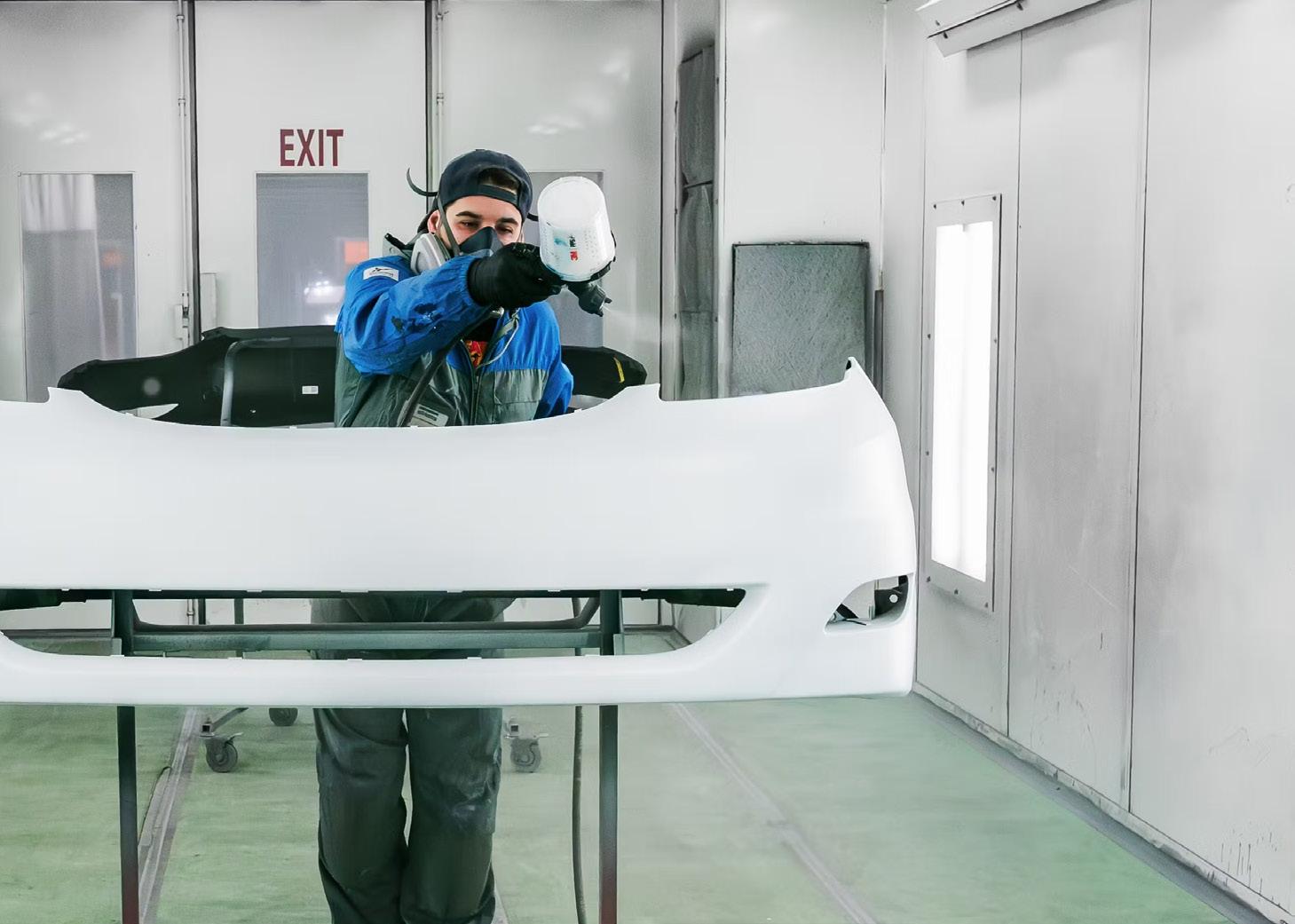


“I’m not trying to brag, but my shops have polished floors,” Chand says. “We run a clean operation. Many people assume that when they walk into a body shop, they’ll find dust everywhere and everything will be disorganized.” Chand has his workers clean up their workstations between jobs. It doesn’t need to be polished, but it needs to look ready to take in another job.
Many of those who come for tours are prospective independent shop owners/ operators who are considering joining the Fix Auto Network. Chand was awarded that level of trust by Fix Auto when he was searching for an MSO as an independent owner in the mid-2010s.
Chand graduated from Modesto Junior College with a degree in automotive technology and entered the collision repair industry in the early 2010s. He says he's open to change, but he’s noticed many shop owners don’t hold that same view.
“What I’ve seen in the last ten years is a lot of shop owners who are stuck in their ways,” Chand says. “If it’s a second-generation owner, they’re going to say, ‘This is the way my dad did it.’ Or they’re going to say, ‘This is the way it’s always been done.'”
Although his degree is in automotive technology, Chand looks at collision repair without a preconceived notion of how operations should be done, so he doesn't have to work hard to think outside the box.
“I look at things differently because I’m not from the industry,” Chand says, adding he often asks himself, “What’s the best way to do this?” or, “What’s the most efficient way to get this done?”
It’s his business acumen, not a background as a working body technician or painter, that drives his operations.
“Don’t ask me how to paint a car, and I don’t know how to do bodywork, so don’t ask me to do that,” he says with a chuckle. “I hire professionals to do that stuff and I work on the business end.”
“We set the expectations ahead of time”
All of Chand’s locations are Tesla-certified collision centers and have been for three years as EVs are becoming more popular. Chand says it wasn’t difficult to get certified, given that Tesla vehicles have fewer components compared to a typical car with an internal combustion engine (ICE), so this move was an easy response to trending demands.
This might be easy for him to say, however, because his Modesto city center location has been the “number 1 Tesla Certified Collision shop in the country” for the last quarter of 2023, according to Chand. He also has a five-star rating for his city center location on Tesla’s website.
Chand also refers to ratings on Carwise to see how customers feel about his servic-
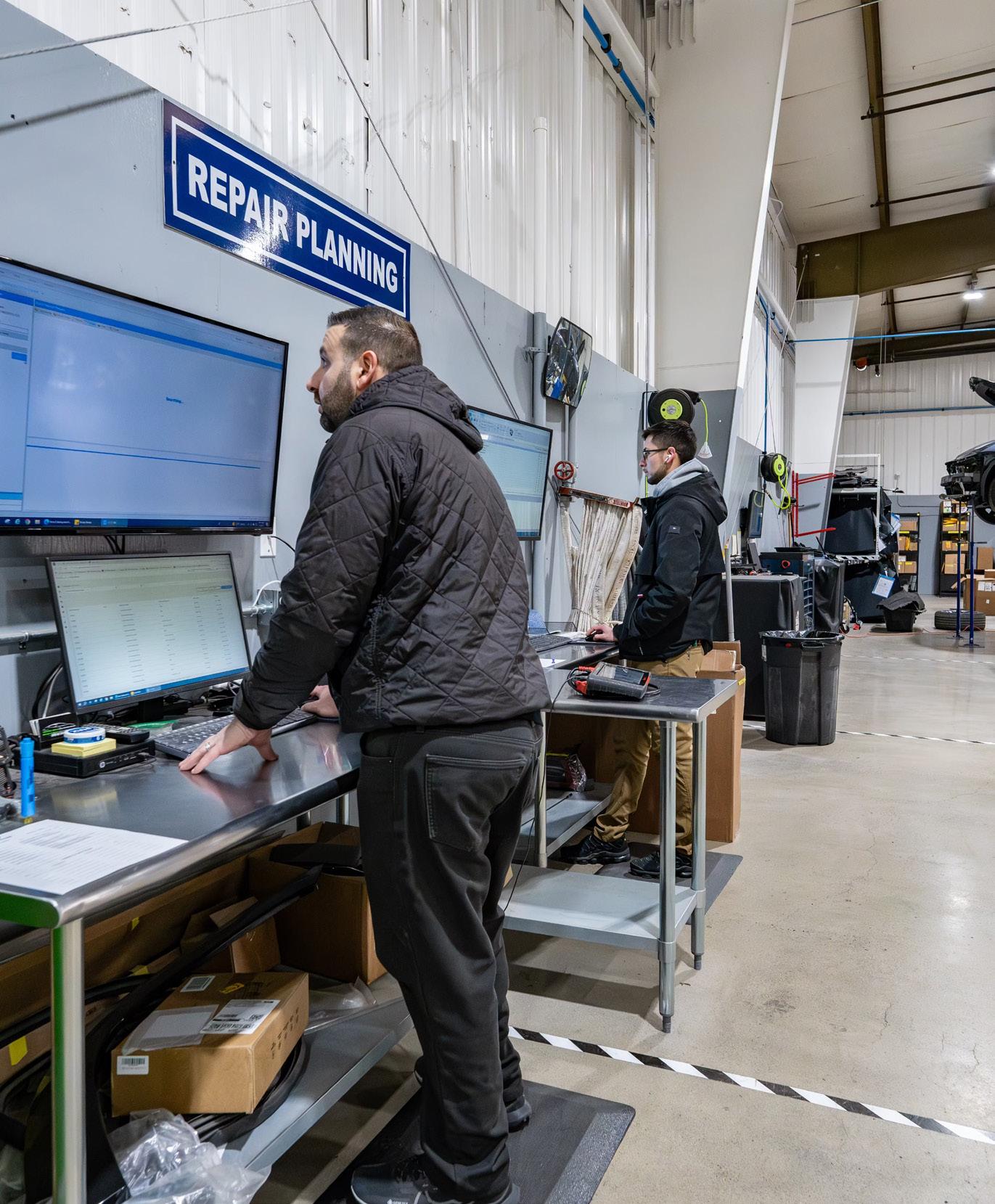
CHAND OFTEN ASKS HIMSELF, “WHAT’S THE BEST WAY TO DO THIS?” OR, “WHAT’S THE MOST EFFICIENT WAY TO GET THIS DONE?”
es. Reviewers on Carwise are asked to rate their experience, the likelihood of recommending the service, repair quality, customer service, whether their vehicle was returned clean or not, as well as whether they were kept informed about their repair process and the timeliness of the repair. The reviews then aggregate into an overall rating of the shop that customers can find. As of late January 2024, Chand’s
Modesto City Center location has five stars and the other two have 4.9 stars.
In addition to offering tours, they also champion clear and effective communication, which is an attribute of Chand’s shops according to customers on Carwise.
“A lot of our customers have never been in an accident before, so we do our best to educate them on the process,” Chand says. “We set the expectations ahead of time.”

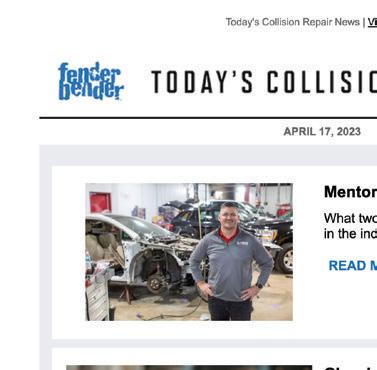
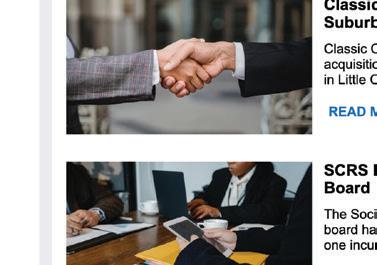
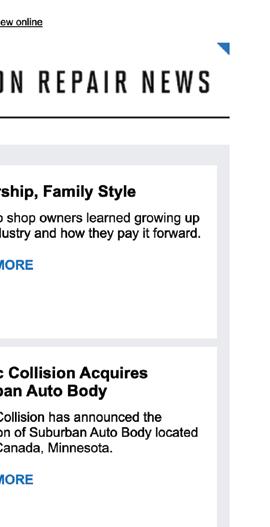
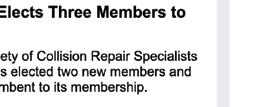
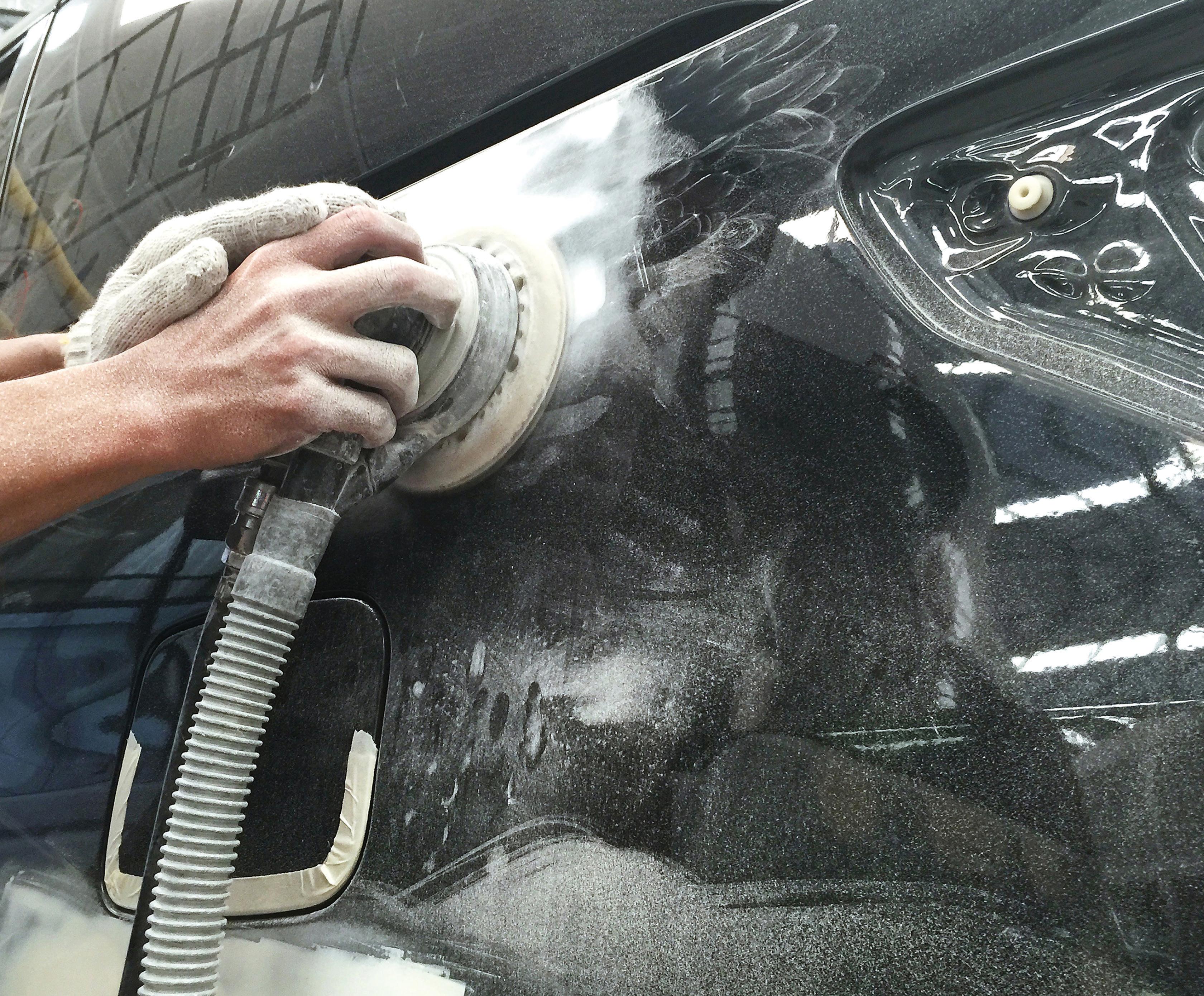


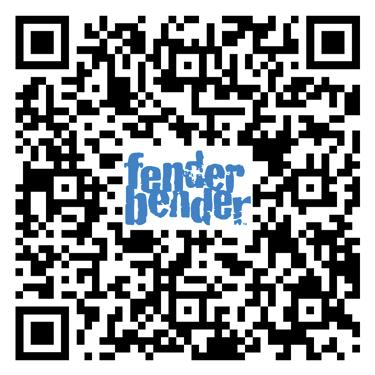

Ensure consistent work flows with high quality and fast cycle times
By STEVE TRAPPIN THIS ARTICLE, we will explore some more advanced process tricks to enable lean production flow. We will look for ways to get things done in advance of the flow line, to ensure work flows out with high quality, with very fast cycle times, and consistent flow each day.
DUAL-PROCESSING ENABLES TECHNICIANS TO TRANSFER PARTS FROM THE DAMAGED PART TO THE FULLY PAINTED REPLACEMENT PANEL, SUCH AS A LIFTGATE, DOOR, OR BUMPER.
In previous articles we have discussed setting production goals, then building a level daily schedule to keep the shop at its Optimal Work in Progress. This article will describe process tools top shops around the globe use to reduce overall repair cycle time.
One of the interesting innovations I observed in the United Kingdom was the estimator certification program and their ability to use the “advanced inspection” to get 95% of the parts pre-ordered. They have R & I tools in the inspection bay to partially disassemble the damaged vehicles. If the damage is too severe, they are unsafe to drive and are put in rental and a teardown is completed right away.
The result is they begin repairs nearly immediately, don’t wait for parts to continue, and use the body repair team to prebuild the vehicles so any minor parts that were missed can be ordered and received while the vehicle is in the flow line.
My friend Scott Wheeler of Axalta teaches a trick relative to mirror-matching parts. They perform a 360-degree inspection of
the inside of the part and then another 360-degree inspection of all angles of the exterior, with headlights being checked to verify the color spectrum matches.
The result is we rarely wait to replace a wrong or damaged part.
After learning about advanced inspections from Jon Parker, our USA innovator, Marshall Auto Body really mastered the painting of parts prior (in advance of drop or immediately after dropping off and verification) to repair-planning. This enables Dual-Processing where a vehicle can be OEM-researched, pre-scanned, prewashed, and mechanical diagnosis can be done while parts are painted on both sides. This enables them to bring the part painted on both sides to the vehicle on a stand DURING DISASSEMBLY and technicians can literally “transfer” parts from the damaged part to the replacement part. This works best for complex assemblies such as liftgates, doors, bumpers, etc.
The result is a significant reduction in second and third supplement and a way faster cycle time.
One innovation I learned from John Swiegart was to build up the vehicle in the body shop so the reassembly can be completed in one to two hours or less. This means A, B, and C pillars, engine bays, core supports, and other inner areas are painted (safely) in the body repair area. This allows interiors to be reinstalled, engines and most underhood or trunk parts to be reassembled in the Body Department. By building these things up there, the final reassembly is merely door handles and final installation of interior trim and exterior emblems.
The result is level flow in the flow line, and it makes dedicating staff to disassembly and reassembly more of a reality.
The German shops Jon Parker works with really use advanced inspection to identify most parts to replace at the time of the inspection, but immediate pre-scan, mechanical diagnosis, and pre-paint and transfer ensures the first supplement is almost always the last. Verifying part prices at the time of placing the order prevents part price increase supplements.
The result of mirror-matching catches wrong or damaged parts from causing delays.
An innovation which started in Italy is to have a linear flow line. This process is also widely used at auto auction facilities across the USA. The flow line is the part of the shop from final bodywork (primer-ready) through prime and block, staging, paint, reassembly, and detail. This process should be able to function on a drumbeat / rhythm or takt of a defined increment (often 70-80 minutes). At those increments, the vehicles should be able to move one stage downstream in the process. Therefore, a vehicle which has $3,000 in repairs would be able to move through the flow line in six to seven hours. If all the setup has been done correctly, the vehicle should not have to stop during the below process:
Plan
• Review paint-related work order items
• Locate all parts from parts carts or paint carts
• Set up parts on prime or paint stands.
• Prep raw plastic
Prep
• (Prep curtains MUST be drawn and dust extraction used)
• Prime (assumes body delivers repairs in “primer-ready” state)
• Block
• Move parts primed to 360-degree flipper-style racks with no sanding dust.
• Orient the vehicle and parts the way they will be set up in the booth
• Mix sealer (if used), base and clear per the color verified during advanced inspection
• Clean vehicle for masking
• Mask the skeleton or edge of the painted area
• Bag entire vehicle, cut out painted openings, tape down the cut-outs to the skeleton masking.
• Final wash and pre-tack
• Reassembly
• Final reassembly
• Calibrate systems
• Test-drive
• Post-scan
Wash and vacuum (assume vehicle was pre-washed)
• Remove any minor paint imperfections.
• Remove protection from interior.
• Final-detail interior and door jambs
• Final detail trunk and gas cap door
• Final-detail underhood and bumper
• Wash and dry entire vehicle
• Pull into the delivery stall
This is a designation started in the United Kingdom and The Netherlands, where 20-35% of repairs are completed using this process, as their damage tends to be smaller in scope due to vehicle size and accident speeds. This process is used for repairs with minimal repair work to be completed, generally four to six hours of total repair time. The idea with these repairs is to check them in the morning and deliver them on the same day at the end of the day. Below are some keys to make this work:
“Advanced Inspection” performed to write a thorough estimate to ensure all parts are pre-ordered.
Begin repairs immediately upon arrival, often going directly into the flowline, and having the prep team perform disassembly and reassembly.
Color verification occurs during advanced inspection with the spectrophotometer so parts can be pre-ordered.
In the next article, we will further explore implementation of lean principles in the collision repair space.

Independent shops have unique advantages that can help take on larger operations. Make sure you’re capitalizing on them.
By NOAH BROWNIT’S EASY TO get in the mindset that bigger is better. As humans, we’re wired to think that size is equal to power and status – the more we have, the more we can do. It makes sense, right?
Not always.
When we asked industry expert Louie Sharp, owner of Sharp Auto Body in Island Lake, Illinois, how much harder it was for smaller independent shops to compete with larger MSOs in their area, he gave me a very blunt answer.
“I think your terminology is AFU – all f***ed up,” Sharp says. “It’s just the opposite. I think it’s much harder for the consolidators to compete with the independents. I don’t think it’s hard to compete against them.”
We posed the same question Joe LaBruno, owner of two-shop operation First Aid Collision in Arden and Asheville, North Carolina. Again, a similar refrain.
“It’s not as hard,” LaBruno says. “I think it’s actually easier.”
So why is that? Sharp says there are several advantages that independents carry over their larger regional competitors, but ultimately it comes down to one thing.
“It’s the speedboat/aircraft carrier analogy,” he says. “You can turn a speedboat on a dime … and head in a completely different direction. It takes you miles to turn around an aircraft carrier. The bigger the ship you’re going to turn around, the more energy and time it’s going to take. An MSO is going to take longer to implement new strategies than an independent shop. And for a consolidator, it’s like an act of Congress.”
The ability to make decisions and implement changes in your shop, whether those are team policies or new repair procedures, quickly and efficiently provides a shop that is up-to-snuff on new trends and tools a huge leg up over MSO competitors.
LaBruno says on top of quick decisionmaking, smaller independent shops have a level of personal connection with their customers that MSOs just can’t match.
“We know they have all the shops –and don’t get me wrong, they pour a lot of money into what they’ve become – but their service is just not that great,” he says. “One of the things we strive to do is create good customer service and take care of our customers. In my opinion, that’s what makes it easier.”
If independent shops play to their strengths, they can successfully take on MSOs and be the top shop in their area.
However, just because independent shops have inherent advantages, they can’t rest on that alone – they need to build strong teams with keen attention to customer service to stand out from the rest.
For a long time, shops were able to operate under a mantra very similar to the famous adage from Field of Dreams and see success.
Sharp says those days are long gone. Shops have to actively work to position themselves as the expert in their area –both in regard to fixing cars and in taking care of customers.
“You’ve got to get out of the mindset that if you’re there, people will come. It’s not hard to position yourself as the expert,” Sharp says. “You become the expert in your market area by adding value.”
Most customers these days assume that most shops they take their car to, whether it’s an MSO or an independent, will be able to do the repair work itself to a fairly competent level. Instead, Sharp and LaBruno say the best way to start building on your advantage and set yourself apart is to improve your customer service and presence in the community.
People trust their hometown shops. LaBruno has been in his community for almost 20 years, and in that time, he’s built relationships with the local high schools and technical colleges. And it’s more than just a financial contribution that many larger corporations also make. His shops host apprentice programs and other hands-on opportunities for students in the area.
Investing in things your customers care about – namely their community and their kids – and then backing up that investment with high-quality services will go a long way in building your shop’s local reputation.
“One of our biggest marketing tools is our customers’ experience and word of mouth,” LaBruno says. “The perception of the company is out in the open for the customers.”
Sharp says that kind of investment in the community can also be the perfect opportunity to learn the needs and wants of your specific demographic, which can help you customize your customers’ experiences in a way that larger shops can’t.
“If you have an idea of the specific people you want to serve, as an independent shop it’s very easy to add features and services that add value to your ideal clients,” Sharp says. “I have loaner cars, free pickup and delivery, and I also have free on-site estimates. Can a consolidator do that? No, it’s too difficult for them to have that.”
As most shop owners know, they can’t do everything by themselves. Sharp and LaBruno say that in order to make the most of your independent-shop advantage, you have to have a strong team in place.
“Your shop has to have values, and you have to build a really strong team. That comes from good leadership,” LaBruno says. “Without those things, you will always find challenges that prevent you from getting to the next level.”
It’s easy in a more corporatized structure for employees to get lost in the shuffle and feel like just a number. For smaller shops, LaBruno says it’s critical to make sure your employees are not just taken care of financially – such as good pay and benefits – but are also taken care of from the sense of personal and professional fulfillment. If they feel like you as a leader are invested in their professional development and personal success, they’ll be more willing to buy into the strategies your shop implements.
“Because of that [buy-in], we’re able to build a strong feeling of being a team. If you just feel like you’re a number and you’re not part of a team, you don’t perform very well,” LaBruno says. “Not only that, but eventually you’re going to start looking to find that team.”
There’s a level of humanity and personal connection that independent shops can share with their customers that larger operations can’t. Building a strong, tightknit team and offering more personalized services are the most effective ways to capitalize on your independent-shop advantage.
That, LaBruno says, is best for the customer.
“And if it’s good for the customer, it’s good for the company,” he says. “I try to ingrain that in my leaders, because at the end of the day, that’s what it’s going to come down to.”

Are you contributing to the tech shortage? If your shop isn’t emphasizing learning, you might be.
By NOAH BROWN ADOBE STOCK 313813885_1OVER THE LAST SEVERAL YEARS, one of the biggest concerns facing shops has been the technician shortage. More than 40 percent of those who participated in the 2023 FenderBender Industry Survey said the tech shortage is the No. 1 challenge facing their shop today.
There are many factors that contribute to the lack of qualified technicians in the industry, but Jeff Peevy, Vice President, Industry Relations, programs and service for I-CAR, says shops need to start looking at themselves as potential contributors to the problem.
“There’s a tremendous amount of attention being given to entry-level technicians and recruiting into our industry, and rightfully so, but the elephant in the room is that a large number of incumbent technicians are underqualified,” Peevy says. “Some of that is driven by (the industry) changing so rapidly, but a majority of shops lack a learning culture.”
Shops need to emphasize education to thrive in today’s rapidly shifting automotive landscape.
In working for I-CAR, Peevy has the opportunity to go into shops across the country to evaluate what teams are doing and how they can help foster new practices to help those shops improve.
During those visits, he says, the lack of skilled technicians has never been more apparent.
“The problem of the lack of qualified technicians already working in the industry repairing cars – that jumps out to me every time I’m in a shop helping with trainings,” he says. There is a skill gap of the people already working in shops.”
Though there are other factors that make hiring and retaining employees difficult, Peevy says a lack of emphasis on education in shops is a main contributor to the shortage of qualified technicians.
“Only around a third of shops today have learning as a centerpiece of their business culture,” Peevey says. “A learning culture helps a technician become and stay qualified. Without that, then we’ve got a problem.”
Peevy has spent the last decade talking about developing a learning culture — you can read more about that in this 2016 article from our sibling publication Ratchet+Wrench — but essentially it boils down to creating an environment in which techs are not only allowed
to learn about their craft but are also actively encouraged to do so.
“I’ve strongly believed that learning is the only source of a sustainable competitive advantage, and I think that is truer today than it ever has been,” Peevy says. “In a learning culture, you give permission and encourage learning and, equally important, you have an expectation that they share what they’ve learned and what they know, and that they’re learning from each other. There has to be an obsession with learning and getting better.”
That’s where I-CAR comes in.
Peevy says I-CAR has a unique privilege and responsibility as a nonprofit created by the industry to help the industry. In its 45year existence, the organization has been able to partner with all players in the automotive industry — from OEMs to independent repairers — to help develop training curriculum that addresses systemic knowledge and skill gaps in a structured format.
“There was a time when training was just random courses that were built to fill an immediate need,” Peevy says. “As I-CAR matured over the years, we began to realize there was a real need for a holistic structure to help pass along the knowledge and skills needed to execute a safe, complete, quality repair.”
Through industry partnerships, I-CAR has developed its Knowledge and Skills Protocol, a “dynamic document” that serves as the foundation for all trainings offered through the Industry Training Alliance. It contains standardized parameters for shops to follow in every facet of a repair, providing reliable information from OEMs that helps establish continuity in training standards.
The protocol is constantly evolving with stakeholder input, giving shops that use it a “North Star” to help guide their training efforts.
“The strength the collaboration gives ICAR training a very valid foundation,” Peevy says. “The protocol, the curriculum, the alliance program, the roles that have been developed all become part of the foundation that supports a learning culture. There’s nothing that we do on our own.”
However, I-CAR and other training programs can only do so much. Shops need to
take advantage of the resources available and encourage their technicians to participate in educational programs.
I-CAR conducted a three-year study in the middle of the 2010s to compare how shops that emphasized learning fared compared to those that didn’t.
Many of the shops had similar specs: roughly the same square footage, similar tools, about the same number of technicians. Despite the similarities, Peevy says the range in performance, production and accuracy of repairs was astonishingly large. When I-CAR went into the shops to observe, the main contributing factor became apparent.
“In the best-performing shops, technicians were quick to help each other and were open to learning from each other,” Peevy says. “The lower performing ones, the technicians saw each other more as competition. They used the bare minimum of the equipment’s capabilities. It was a fascinating experience.”
Consistent and constant education is critical to a shop’s success. There are a large number of factors that contribute to a shop’s difficulty to hire and retain skilled technicians –rapidly changing technology and sustained economic issues over the last several years, just to name a few – but a prime contributor to that is shops not consistently investing in education for their employees.
“For the shops that don’t get make learning a large element of their business culture, the number of vehicles on which they are capable to perform a complete and safe repair is going to continue to dwindle. There are going to be fewer cars that they can repair properly, if they can repair them at all,” Peevy says. “That’s not a place that we want anybody to be. There are a lot of challenges, and I have a lot of respect for those who are successful in doing it and have a desire to do it right. I think our industry as a whole sometimes fails to respect those that are committed to a safe, complete, quality repair. That’s something that is really important.”

Before making investments, consider what your business is doing the most.By TODD KORTEMEIER
AT ITS MOST BASIC LEVEL, an investment in an ADAS calibration system comes with all the advantages of any new service or technology. It’s a new service you’re able to offer and helps keep your business up to date with the rapidly changing state of the industry. But unlike say, a new paint booth, offering ADAS calibration is quickly becoming less of an optional upgrade and more of a requirement.
To embark on an ADAS journey is to be presented with myriad options and choices. What OEMs will be serviced? Is it better to purchase targets and then use a remote calibration service? Should a shop even purchase its own equipment?
For Cody Rinaudo, who at the time of our interview was estimator at Frank’s Accurate Body Shop in Slidell, Louisiana, answering these questions wasn’t simple, per se, but he did have a guiding light. (His father, Frank, sold to Joe Hudson’s Collision Centers January 5.)
“Our facility is first, a customer-centric, and second, an OEM-centric facility,” Rinaudo says. “So, pretty much all of our decisions revolve around how those two are affected, because ultimately, those are really the only things that matter at the end of the day.”
Just like any business decision, it’s important to consider what your shop is really about and what it values. For Rinaudo, that means doing right by the customer. And moreover, it means doing right by the customer in giving

them a repair that their car’s manufacturer would sign off on.
“For us, that made it pretty clear there’s really only one direction for ADAS equipment, and that will be what the manufacturer states,” Rinaudo says. “So if they sell their own equipment, then we buy that equipment. If they specify a certain aftermarket system that they approve, then that’s what we would use if it made sense.”
Rinaudo says Frank’s got into calibrations early, six or seven years ago. The shop was doing a lot of work on Hondas
Space-intensive
When thinking about investing in ADAS work, the focus is often on equipment. But doing calibrations also comes with significant requirements for space. COURTESY
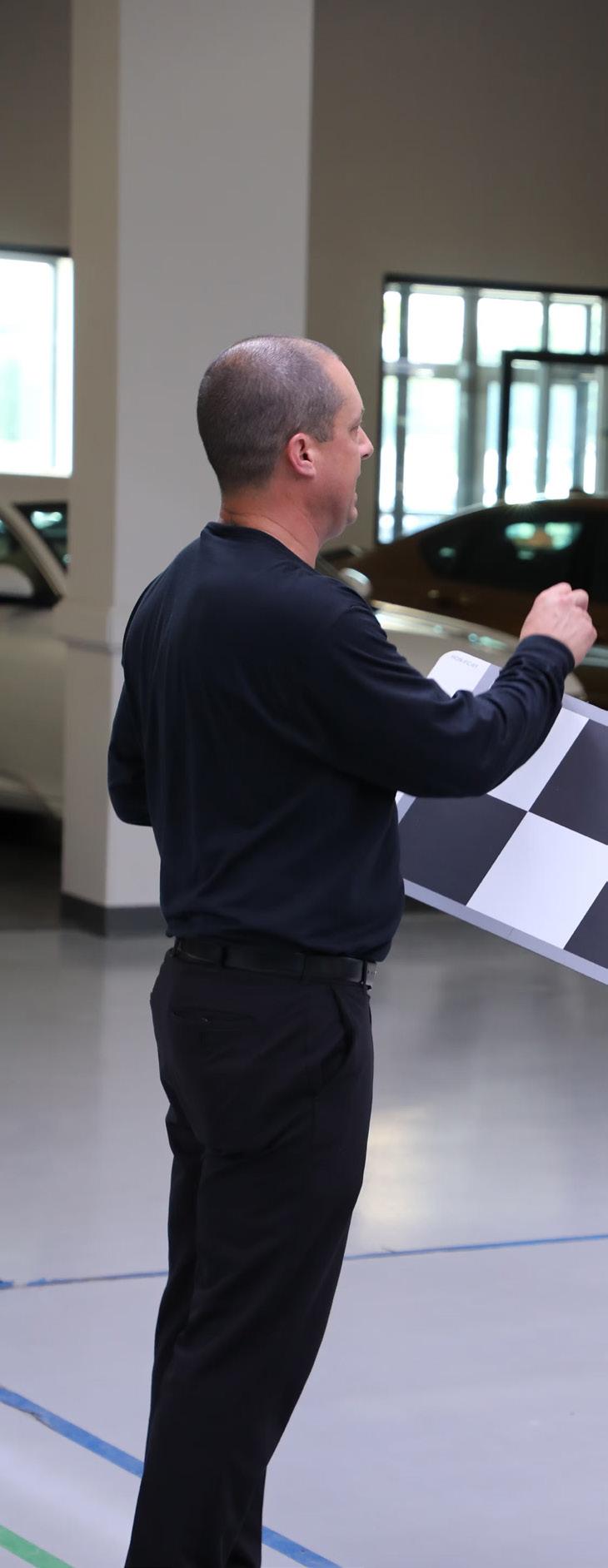
and Toyotas, which were requiring more calibrations in terms of front radar detection and blind spot monitors. The shop would often send that work to a dealer, but wanting to ensure that the calibrations were being done to the letter of what the manufacturer recommended, they began to look at what it would take to bring calibrations in-house.
“We’ve always had the mantra of pulling things in house,” says Renaudo. “We do our own glasswork, wheels and tires, alignments, and calibrations. So we don’t sublet
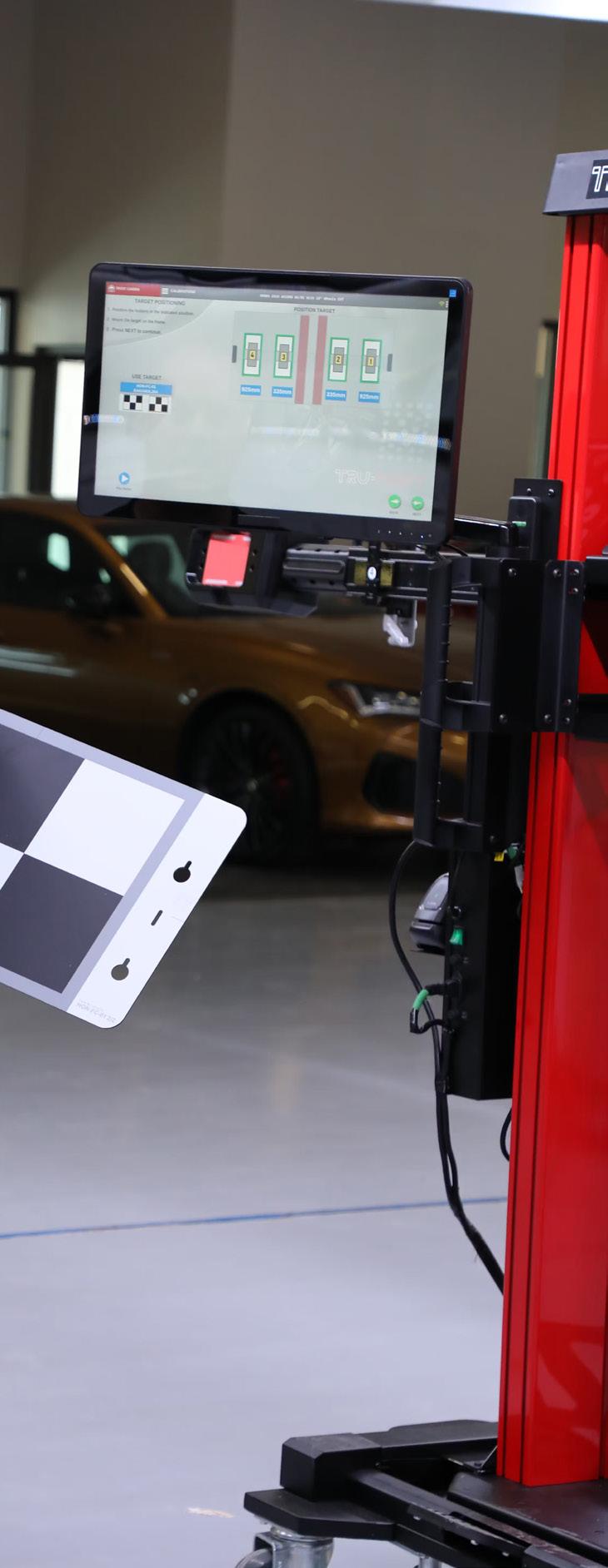
pretty much anything. Our guys cross-train on pretty much every process that’s needed. We invest into the training for them.”
When thinking about investing in ADAS work, the focus is often on equipment. But doing calibrations also comes with significant requirements for space. And it’s not only the square footage, the room has to meet many other parameters as well to perform a proper calibration. Tim Paap, owner of Paap Auto Body in Mattoon, Illinois, was already pretty familiar with the growing importance of ADAS calibrations, but the room requirements still came as a surprise.
“The room was the biggest shock to me,” Paap says. “When I started learning about ADAS, I found you cannot have any windows, any sunlight coming in, you have to have lights in there, you have to have lighting that does not cast shadows. And you have to have about a 1,500- to 2,000-square-foot room with nothing in it.”
Paap is about to embark on building a new 15,000-square-foot space primarily to house EV vehicles, but calibrations will run out of there as well. The space will be built with drywall and not metal walls, another requirement for doing ADAS work. Rinaudo, too, noted that space is a major consideration in making this investment.
“I think for an Accord, they need like 45 to 47 feet of space, of length, which is substantial,” Rinaudo says. “So the actual square footage needed is the most difficult to accommodate. ... A lot of people probably overlook how much space that can actually be.”
Paap’s own ADAS education began while using a remote provider for scans. After diving into the repair procedures himself, Paap observed that the current state of scanning technology might be missing things that the OEMs required. So he bought a scan tool for Toyota. That led to taking Toyota training. Then there was Nissan training. Long story short, Paap knows a thing or two about scanning and calibrations.
“So I have seen the aftermarket scan tools, equipment,” says Papp. “And we’ve actually compared them, like the ABA test. I can tell you, the aftermarket scan tool equipment
will ‘ghost-code’ a whole bunch of stuff compared to what the OEM will.”
Like Rinaudo at Frank’s Auto Body, Paap’s shop is very OEM-centric, and so that helped inform their strategy when pursuing equipment. For shops that want to go the OEM route, there are choices they can make, such as owning OEM scan tools but using aftermarket targets to do the calibration. Paap, again through his own experimentation, advises against that. Or, at minimum, shops need to know what they’re getting into to complete calibrations safely.
Paap shares an example of a vehicle he tested at his shop that would get a foot over the centerline before the lane departure assist would kick in. After redoing the calibration with the OEM target, the assist stepped in if the vehicle got within roughly six inches of the line.
“That’s why I’m such a proponent for OEM scan tools and OEM targets,” Paap says.
There is also a greater sense of support that comes from being aligned with OEMs, Paap says. He speaks with his contacts at Toyota or Nissan once or twice a year, and also is able to learn from fellow shop owners through performance groups — Paap is a member of Mike Anderson’s Spartan group — who are talking to the OEMs as well.
“We talk to them at least twice a year, if not more,” says Paap. “And then we actually have a group of about 180 of us that we’re always talking at all times during the month. And we’re always finding new things, repair procedures, owner’s manuals, anything.”
While both Rinaudo and Paap have found that OEM-based solutions were right for their shops, they aren’t necessarily the best choice for all shops. It can be an expensive outlay for equipment — though Rinaudo notes that at least in the case of Toyota and Honda, their tools work on multiple models, which spreads out some of the cost. Not every shop will be able to make the same level of investments, but it’s ultimately about making the smartest investment to benefit the business.
“I would say the brands that you work on the most are the ones that you would want to get the OEM tooling for, the OEM scanning equipment for,” Paap says. “Then, I would work on the ones that are like the third and fourth tier that you don’t work on as much.”
Attending Discover Leadership training has made me a stronger, better version of myself Leadership is a daunting word for me that makes me conjure many questions. How do I know if I am a good leader? Am I effective? Am I helping my team to grow, or am I holding my team back? Am I showing enough empathy? Am I communicating enough? These questions — and more — have played out in my head many times. I read books on self-growth. I listen to podcasts. I have even taken a few classes. Ultimately, what I found for myself is that to be an effective leader, I have to continually work towards that. Leadership is not a skill you learn once and become efficient in it; it’s a skill that requires constant reinforcement and self-growth. I know I cannot have a strong team at work without being a strong leader.
Last year, I had the opportunity to see Mike Jones from Discover Leadership speak at the FenderBender Management Conference. He spoke on leadership and identifying your leadership traits. I was intrigued with Mike’s presentation and accompanying exercise he asked us to do. I talked to a handful of other shop owners and operators at the conference who had been through his Master Graduate Leadership Program, and everyone had encouraging things to say about it. Two mentors of mine both told me they wish they would have found the class sooner because they were more successful than they ever were before.
I started looking around at other leadership programs, but I kept coming back to the Discover Leadership program. The more I investigated it, the more I was intrigued because it almost felt a little like a “cult.” People would give me a very broad overview of the course and then say things like “All will be known in due time.” “What does that even mean?” I thought. Graduates would not give me any details into the program. The only thing I really knew was that I would have to give up my cell phone for four days. After much thought, I said to myself, “What the heck do I have to lose? All of these people are telling me it’s one of the best things they have ever done, so let’s do it.”
I won’t lie, I went into the program with an open mind but an attitude of reservation because I did not know what to expect. What I can now tell you is that the Master Graduate Leadership Program was probably the hardest thing I have ever done mentally and emotionally, and I am 100% glad I took the leap of faith and went through the program. I get the hype. I truly believe it’s one of the best leadership courses out there, so much so that I’m sending three of my employees through it.
The first two days of the program are mostly
classroom-based learning in a group environment. But wear comfortable clothing because the days are extremely long. This is not an 8-to-5 program; you will be going till 10 at night or later. In the beginning, you will be shy and reserved around the people you are going through the program with. By day two, you will have already started to create a bond with these people; embrace it. On days one and two, you will be mentally out of your comfort zone — and that is okay. You will be sleeping in cabins like summer camp, “boys” in one cabin and “girls” in another. You won’t care about sleeping arrangements; you will be too tired!
On day two, you get a bit of downtime at the very end of the day. This, I feel, is meant as a reward and to encourage you going into day three. Day three and four will mostly be outside, no matter if it’s raining or 20 degrees, like it was one of my days. The last two days do have a physical component to them, but not in a way in which it would hinder anyone from participating. No matter your age, shape, or size, you will be able to participate. Day three and four have a more emotional element, too. The physical and emotional elements play well into each other and turned out to be a lot of fun for me.
By the end of day four and graduation, you will have bonded with your classmates, and some of them will be your closest friends for the rest of your life. It sounds crazy, since it is just a four-daylong program. But you will be completely shaken out of your comfort zone, and the people with whom you go through this will be your lifeline during the program and after. This is a leadership class, but leadership isn’t just in the workplace. You will come out as a stronger and better version of yourself, which will ultimately affect every aspect of your life on a personal and work level.
I now understand that leadership does not just pertain to me as the owner or manager of my company. Every single person in my shop is a leader in some form or fashion, even if they do not realize it. I would encourage you that you need to continually grow and educate yourself to be a better leader. It is a never-ending process, but you also need to do the same for your team. You can be the best leader in the world, but your team also needs to buy into what you are doing. And you are the one who will have to get their buy-in. If you want a highly functioning team, it won’t just happen by chance. You must develop it. I know now I am a better person and a better leader. I am working to make my team into leaders because I know by doing that, I will have a better shop.

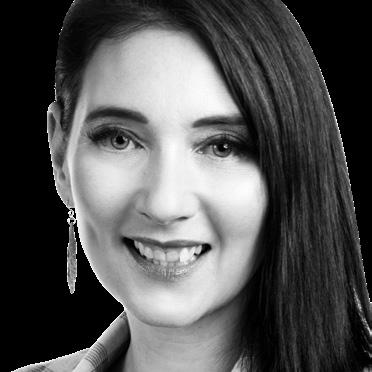
EMAIL: tiffanykaymenefee@gmail.com
ARCHIVE: fenderbender.com/menefee


Knowledge serves as armor against the strategies insurers might use to undermine fair compensation claims
In the intricate dance between collision repair shops and insurance companies, a firm understanding of the industry’s strategies is vital. While it may seem as though insurance companies utilize a veil of naivete to their advantage, we must navigate these waters carefully to safeguard our businesses and ensure our customers’ best outcomes.
On the surface, the processes followed by insurance companies appear straightforward: assess, approve, and reimburse. However, as shop owners, we know the reality is often more complicated. Insurers strategically employ what might be perceived as naivete to limit reimbursements, interpreting policies in ways that benefit their bottom lines. This tactic, while legal, creates a challenging environment for repair shops that advocate for fair compensation.
When our shop representatives sit across the negotiating table, they’re not just dealing with intricate insurance policies they have no business negotiating. They’re also an opponent that’s strategically naive to the vehicle manufacturer’s standards. Should a shop appear unversed in the labyrinthine policies and regulations, insurers might leverage this to their advantage. What’s labeled “strategic naivete” is a calculated maneuver to sway negotiations.
The Misguided Hammer
Regrettably, there have been instances where the insurance industry has utilized various governmental departments, state officers, and even law enforcement to exercise pressure on repair shops. Tactics ranging from intimidation to rigorous questioning aim to sway decision-making in the insurer’s favor. Ironically, officials deployed to investigate such situations are often unaware of insurance’s daily tactics, themselves enmeshed in the web of strategic naivete.
For industry dynamics to shift toward positive,
consistent consumer experiences and full compensation, we need to cultivate an atmosphere of informed assertiveness as shop owners. This does not imply a combative stance but requires an adept understanding of insurance policies and the regulatory landscape. Awareness is a potent shield against manipulation; it empowers shop owners to stand firm on equitable grounds without descending into antagonism.
Staying Informed and Professional Collision repair shops must continuously educate themselves on the best practices and changes within the insurance industry. This knowledge serves as armor against the strategies insurers might use to undermine fair compensation claims. Workshops, seminars, and even online courses can sharpen a shop owner’s acumen and provide the foresight needed to anticipate insurance tactics.
Part of this professional development also includes understanding the rights and protections available to businesses under the law. In an industry where unwarranted accusations and bullying practices are not unheard of, knowledge translates directly into power — the power to conduct business without fear of undue harassment.
The responsibility falls on us as owners to pierce through the veil of strategic naivete that insurers may present. With informed strategies and professional acuity, shop owners can ensure that they receive fair treatment and that their customers’ interests are well represented.
In the end, the goal is not to spark adversarial relationships but to establish a balanced, transparent dialogue with insurance companies. Only then can we hope to see a marketplace that champions both the businesses performing critical repair work and the policyholders relying on their services.
Stay alert. Stay informed. Stay fair. The keys to navigating these industry challenges lie in our hands, and it’s up to us to turn the tide in favor of justice, fairness, and integrity.
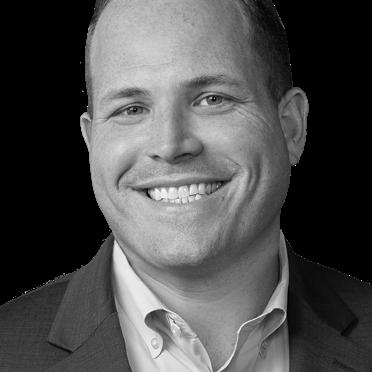

DREW BRYANT has been the owner of DB Orlando Collision since August of 2011. A 20 Group leader, in-demand conference speaker and award-winning shop owner, Bryant takes a non-traditional approach to process implementation, lean process development, & overall operational experience while remaining dedicated to his staff’s personal and professional development.
PARKS EMAIL: drew@orlandocollision.com
STEVEN
ARCHIVE: fenderbender.com/bryant
